 Search by Keyword
|
“I WANT TO HOLD YOUR HAND”
(John Lennon – Paul McCartney)
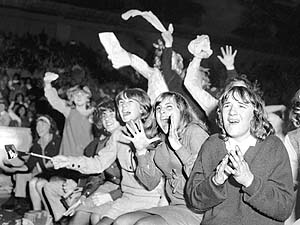 With this monumental hit song, "England’s Phenomenal Pop Combo," as the “Meet The Beatles!” album front cover discribed them, immediately became America’s Phenomenal Pop Combo. Most US residents paying attention in 1964 will undoubtedly say that “I Want To Hold Your Hand” was their indoctrination into Beatlemania. While their first three US single releases of 1963 only made tiny ripples in the pond that was American music, this single, rush-released on December 26th, 1963, was the tsunami that not only dominated the record charts, but monopolized the hearts and minds of the entire population of the country. Everyone, young and old, was curious who the originator of this incredibly unique sounding music could be. With this monumental hit song, "England’s Phenomenal Pop Combo," as the “Meet The Beatles!” album front cover discribed them, immediately became America’s Phenomenal Pop Combo. Most US residents paying attention in 1964 will undoubtedly say that “I Want To Hold Your Hand” was their indoctrination into Beatlemania. While their first three US single releases of 1963 only made tiny ripples in the pond that was American music, this single, rush-released on December 26th, 1963, was the tsunami that not only dominated the record charts, but monopolized the hearts and minds of the entire population of the country. Everyone, young and old, was curious who the originator of this incredibly unique sounding music could be.
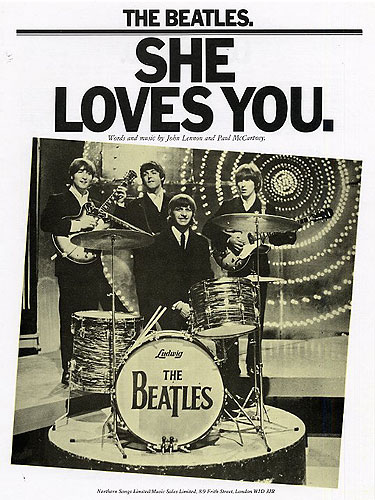 The single was originally scheduled for release on January 13th, 1964, but the release date was moved forward due to great public demand. This demand originated, in part, from one 15-year-old girl in Washington DC named Marsha Albert. After seeing a November 16, 1963 feature on the CBS Evening News about The Beatles, she wrote a letter to a local radio station, WWDC, asking why they weren’t playing anything from this huge “sociological phenomenon,” as the news report called them. "It wasn't so much what I had seen, it's what I had heard," Marsha Albert stated in the book "The Beatles' Helping 'Hand.'" "They had a scene where they played a clip of "She Loves You" and I thought it was a great song...I wrote that I thought The Beatles would really be popular here, and if (WWDC disc jockey Carroll James) could get one of their records, that would really be great." The single was originally scheduled for release on January 13th, 1964, but the release date was moved forward due to great public demand. This demand originated, in part, from one 15-year-old girl in Washington DC named Marsha Albert. After seeing a November 16, 1963 feature on the CBS Evening News about The Beatles, she wrote a letter to a local radio station, WWDC, asking why they weren’t playing anything from this huge “sociological phenomenon,” as the news report called them. "It wasn't so much what I had seen, it's what I had heard," Marsha Albert stated in the book "The Beatles' Helping 'Hand.'" "They had a scene where they played a clip of "She Loves You" and I thought it was a great song...I wrote that I thought The Beatles would really be popular here, and if (WWDC disc jockey Carroll James) could get one of their records, that would really be great."
 Even though the report featured their previous hit “She Loves You,” Carroll James arranged to have their recent British single brought over to the radio station (with the help of a stewardess on a flight from Britain) and played on the air on December 17th, 1963. "Carroll James called me up the day he got the record," Marsha Albert continues, "and said, 'If you can get down here by 5 o'clock, we'll let you introduce it," which she did. That song was “I Want To Hold Your Hand.” Even though the report featured their previous hit “She Loves You,” Carroll James arranged to have their recent British single brought over to the radio station (with the help of a stewardess on a flight from Britain) and played on the air on December 17th, 1963. "Carroll James called me up the day he got the record," Marsha Albert continues, "and said, 'If you can get down here by 5 o'clock, we'll let you introduce it," which she did. That song was “I Want To Hold Your Hand.”
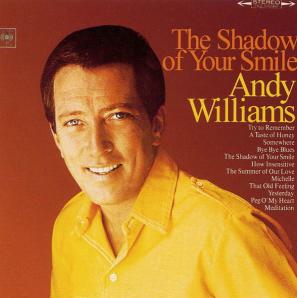 The radio response was amazing and immediate, listeners lighting up the phone lines at WWDC asking where they could buy this new record (which they couldn’t yet). WWDC played the song repeatedly, with Carroll James interrupting it in the middle of the song with the phrase “This is a Carroll James exclusive” so that no one could tape the song off of the air to use elsewhere. With their usual playlist consisting of songs by Bobby Vinton and Andy Williams, "I Want To Hold Your Hand" stood out like a sore thumb. An uninterrupted tape recording of the song was quickly sent to a disc jockey in Chicago who also played it on the air, receiving great response from their listeners. They, in turn, sent a tape copy of the song to a radio station in St. Louis who also had the same favorable experience. This all happened within days of its first broadcast on December 17th in Washington D.C. The radio response was amazing and immediate, listeners lighting up the phone lines at WWDC asking where they could buy this new record (which they couldn’t yet). WWDC played the song repeatedly, with Carroll James interrupting it in the middle of the song with the phrase “This is a Carroll James exclusive” so that no one could tape the song off of the air to use elsewhere. With their usual playlist consisting of songs by Bobby Vinton and Andy Williams, "I Want To Hold Your Hand" stood out like a sore thumb. An uninterrupted tape recording of the song was quickly sent to a disc jockey in Chicago who also played it on the air, receiving great response from their listeners. They, in turn, sent a tape copy of the song to a radio station in St. Louis who also had the same favorable experience. This all happened within days of its first broadcast on December 17th in Washington D.C.
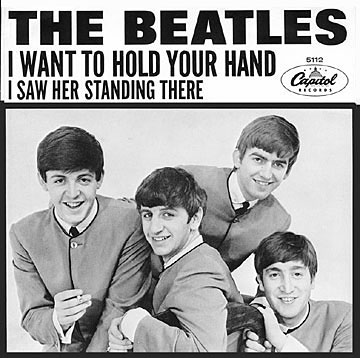 Capitol Records caught wind of this and threatened to arrange for a court order to stop radio stations from playing the song before their release date of January 13th, 1964. When the radio stations ignored this, Capitol realized they needed to respond quickly in order to meet demand. First off, the label decided to move up their planned release date for their first Beatles single from January 13th, 1964 to December 26th, 1963. Second, with Capitol's agreed-upon investment of $40,000 as a campaign to launch The Beatles in America underway, along with the commotion the song was already creating in three key US cities, the record label decided to bump up the initial pressing of 200,000 discs to an even million. In order to accomplish this, they decided to commission pressing plants other than their own to press the record, to ensure that they were made quickly enough to be in record shops throughout the country before the end of the year. Capitol Records caught wind of this and threatened to arrange for a court order to stop radio stations from playing the song before their release date of January 13th, 1964. When the radio stations ignored this, Capitol realized they needed to respond quickly in order to meet demand. First off, the label decided to move up their planned release date for their first Beatles single from January 13th, 1964 to December 26th, 1963. Second, with Capitol's agreed-upon investment of $40,000 as a campaign to launch The Beatles in America underway, along with the commotion the song was already creating in three key US cities, the record label decided to bump up the initial pressing of 200,000 discs to an even million. In order to accomplish this, they decided to commission pressing plants other than their own to press the record, to ensure that they were made quickly enough to be in record shops throughout the country before the end of the year.
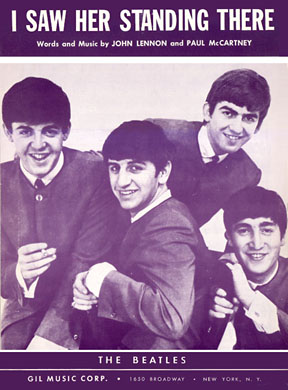 By December 26th, 1963, there could hardly be found a popular radio station in the US that wasn’t playing “I Want To Hold Your Hand,” as well as its b-side “I Saw Her Standing There.” Shortly thereafter, radio stations were playing any other Beatles song they could get their hands on, such as their three unsuccessful singles released earlier in 1963. Capitol’s pressing plants must have kept up production even after the initial million copies were pressed, because by January 10th, 1964 the single had already sold over 1,000,000 copies. (The Beatles were presented with a gold record for the single as early as February 10th, 1964 at a ceremony at the Plaza Hotel during their first US visit.) In fact, 250,000 copies were sold within the first three days of release! In New York City, it was estimated that 10,000 copies were purchased every hour. By March 28th, 1964, the single had sold 3.4 million copies and, in total, it went on to sell 5 million copies in the US alone. By December 26th, 1963, there could hardly be found a popular radio station in the US that wasn’t playing “I Want To Hold Your Hand,” as well as its b-side “I Saw Her Standing There.” Shortly thereafter, radio stations were playing any other Beatles song they could get their hands on, such as their three unsuccessful singles released earlier in 1963. Capitol’s pressing plants must have kept up production even after the initial million copies were pressed, because by January 10th, 1964 the single had already sold over 1,000,000 copies. (The Beatles were presented with a gold record for the single as early as February 10th, 1964 at a ceremony at the Plaza Hotel during their first US visit.) In fact, 250,000 copies were sold within the first three days of release! In New York City, it was estimated that 10,000 copies were purchased every hour. By March 28th, 1964, the single had sold 3.4 million copies and, in total, it went on to sell 5 million copies in the US alone.
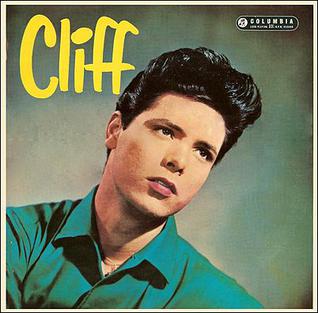 The Beatles always stated that making it in the US would be the ultimate fantasy, being that the group were great admirers of American music and that nobody from Britain had ever made it big there. John Lennon stated, “Cliff (Richard) went to America and died. He was fourteenth on the bill with Frankie Avalon.” He felt they didn’t stand a chance in the US. The Beatles always stated that making it in the US would be the ultimate fantasy, being that the group were great admirers of American music and that nobody from Britain had ever made it big there. John Lennon stated, “Cliff (Richard) went to America and died. He was fourteenth on the bill with Frankie Avalon.” He felt they didn’t stand a chance in the US.
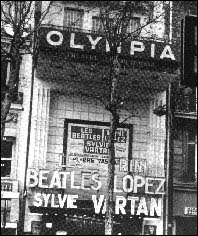 When the single hit #1 on the Cashbox chart on January 25th, 1964 (they hit #1 on the Billboard Hot 100 on February 1st, 1964), the impact was especially great for The Beatles themselves. They were in Paris playing a three week engagement at the Olympia Theater, which began on January 15th, 1964. While returning from a show on the 25th of that month, they received a telegram from Capitol Records relating that they were #1 in America. Paul explains their excitement: “We all tried to climb onto Big Mal’s (Evans) back to go round the hotel suite…we didn’t come down for a week.” Ringo said they “all just started acting like people from Texas, hollering and shouting ‘Yahoo!’” When the single hit #1 on the Cashbox chart on January 25th, 1964 (they hit #1 on the Billboard Hot 100 on February 1st, 1964), the impact was especially great for The Beatles themselves. They were in Paris playing a three week engagement at the Olympia Theater, which began on January 15th, 1964. While returning from a show on the 25th of that month, they received a telegram from Capitol Records relating that they were #1 in America. Paul explains their excitement: “We all tried to climb onto Big Mal’s (Evans) back to go round the hotel suite…we didn’t come down for a week.” Ringo said they “all just started acting like people from Texas, hollering and shouting ‘Yahoo!’”
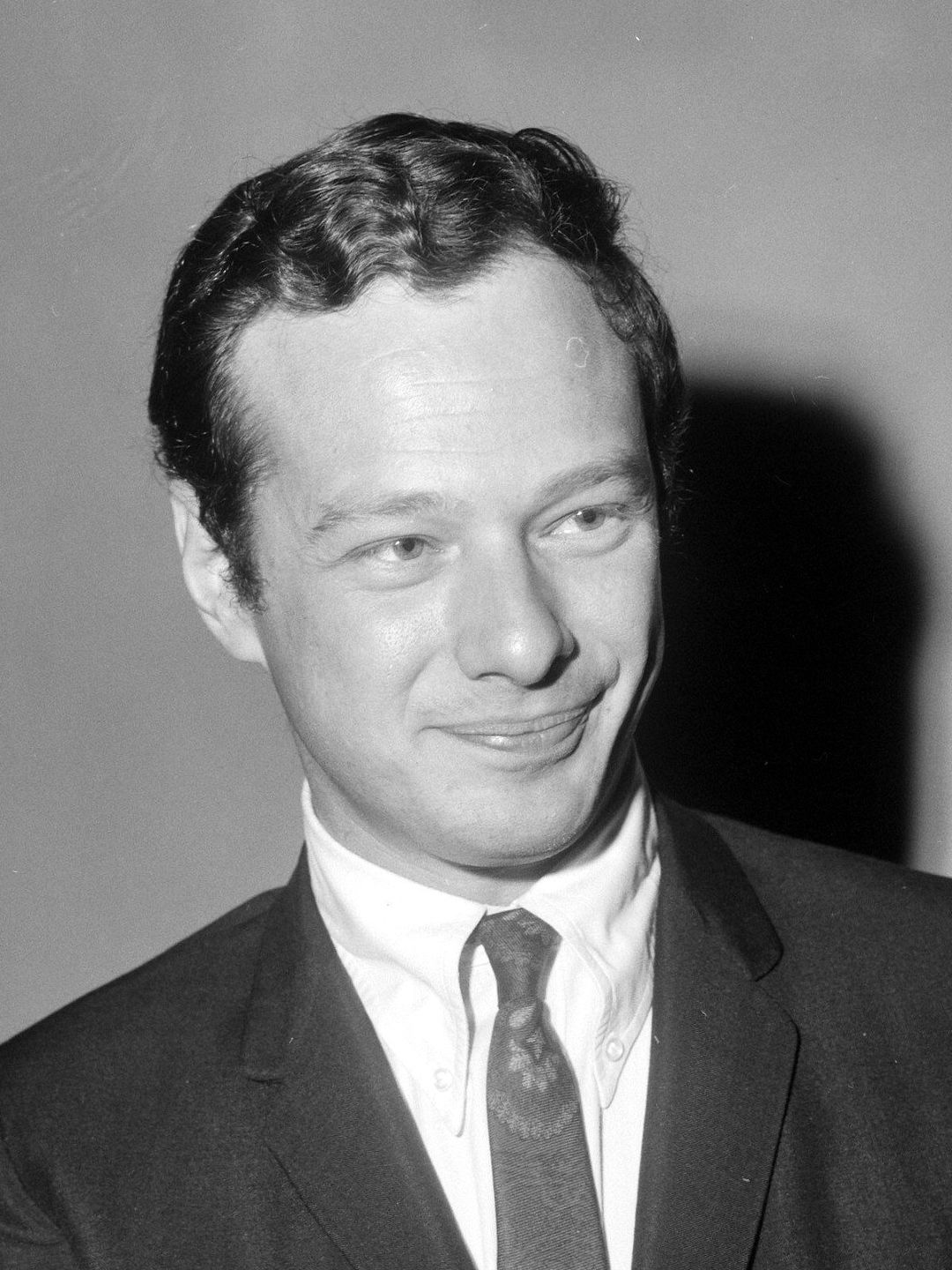 They celebrated that evening by going to dinner at the George V Hotel with Brian Epstein (who made everyone laugh by putting a chamber pot on his head), George Martin (who was there to produce German versions of “She Loves You” and “I Want To Hold Your Hand” as well as “Can’t Buy Me Love”) and Judy Lockhart-Smith (Martin’s assistant and future wife). The excited atmosphere is captured by a famous photograph of a pillow fight The Beatles had in the hotel room that evening. They celebrated that evening by going to dinner at the George V Hotel with Brian Epstein (who made everyone laugh by putting a chamber pot on his head), George Martin (who was there to produce German versions of “She Loves You” and “I Want To Hold Your Hand” as well as “Can’t Buy Me Love”) and Judy Lockhart-Smith (Martin’s assistant and future wife). The excited atmosphere is captured by a famous photograph of a pillow fight The Beatles had in the hotel room that evening.
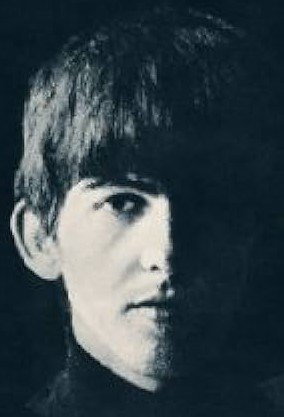 McCartney had said in retrospect that The Beatles were determined not to go to America until they had a #1 record there. So, it was explained by Paul, when they heard the news of “I Want To Hold Your Hand” reaching #1, they started making plans to go there. The actual truth, though, is explained by George. “We were booked to go to America directly after the Paris trip, so it was handy to have a #1,” he said. “We’d already been hired by Ed Sullivan, so if it had been a #2 or #10 we’d have gone anyway.” McCartney had said in retrospect that The Beatles were determined not to go to America until they had a #1 record there. So, it was explained by Paul, when they heard the news of “I Want To Hold Your Hand” reaching #1, they started making plans to go there. The actual truth, though, is explained by George. “We were booked to go to America directly after the Paris trip, so it was handy to have a #1,” he said. “We’d already been hired by Ed Sullivan, so if it had been a #2 or #10 we’d have gone anyway.”
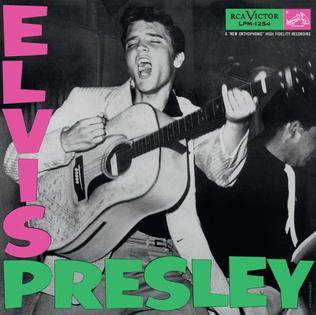 The phenomenal impact on America was due, in part, to the current music trends, or lack thereof, that permeated the airwaves. Looking carefully at what was popular in American music for the previous year, you can easily see that the US was due for a new sensation. Elvis Presley was now relegated mostly to movie soundtrack songs, while the rest of the charts were taken up with a mish-mash of uneventful musical trends. The phenomenal impact on America was due, in part, to the current music trends, or lack thereof, that permeated the airwaves. Looking carefully at what was popular in American music for the previous year, you can easily see that the US was due for a new sensation. Elvis Presley was now relegated mostly to movie soundtrack songs, while the rest of the charts were taken up with a mish-mash of uneventful musical trends.
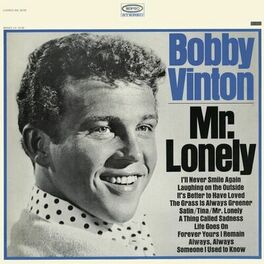 Surf music was being pioneered by The Beach Boys (who flourished later after that trend wore off), folk was in high gear (Peter, Paul & Mary, The Rooftop Singers and The Kingston Trio), romantic ballad singers were strong (Steve Lawrence, Bobby Vinton and Al Martino), as well as a vast array of novelty songs (such as “Dominique,” “Hello Mudduh, Hello Fadduh” and “Sukiyaki”). The exciting rock and roll trend that was championed in the late '50s by Chuck Berry, Little Richard, Jerry Lee Lewis and Elvis had indeed died down to a low rumble. “Louie Louie” by The Kingsmen was not enough to revitalize the rock and roll fever that seemed to have died. The phrase “Rock And Roll Is Here To Stay” appeared to have been a false claim. Surf music was being pioneered by The Beach Boys (who flourished later after that trend wore off), folk was in high gear (Peter, Paul & Mary, The Rooftop Singers and The Kingston Trio), romantic ballad singers were strong (Steve Lawrence, Bobby Vinton and Al Martino), as well as a vast array of novelty songs (such as “Dominique,” “Hello Mudduh, Hello Fadduh” and “Sukiyaki”). The exciting rock and roll trend that was championed in the late '50s by Chuck Berry, Little Richard, Jerry Lee Lewis and Elvis had indeed died down to a low rumble. “Louie Louie” by The Kingsmen was not enough to revitalize the rock and roll fever that seemed to have died. The phrase “Rock And Roll Is Here To Stay” appeared to have been a false claim.
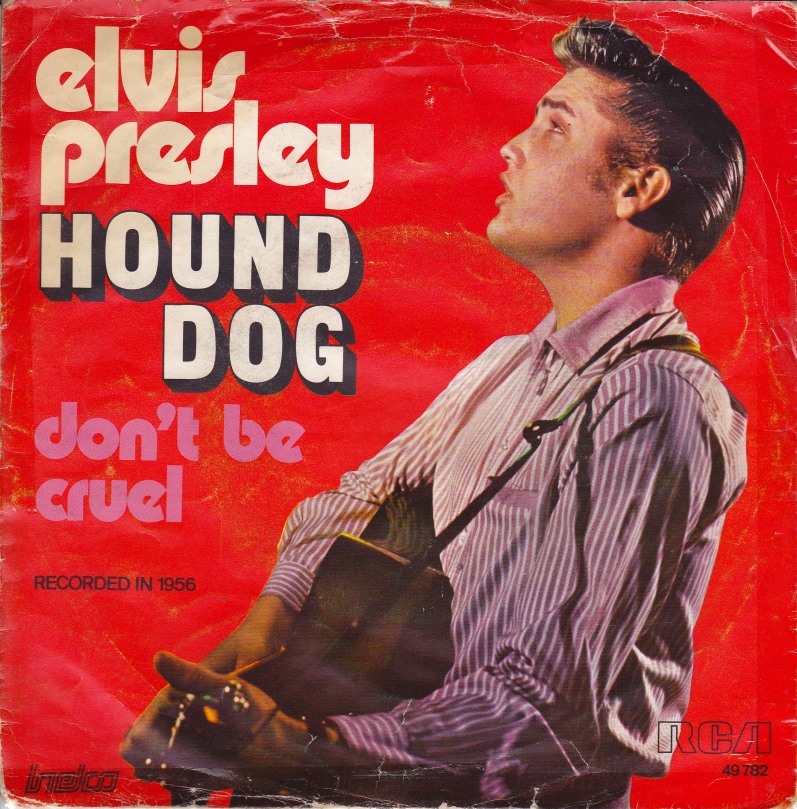 In the climate of such mediocrity, The Beatles stood out in full force. It was obvious that they had taken the baton from Elvis to bring that same measure of rock and roll excitement back to the US for the next generation to enjoy. That excitement has not ceased to exist since December 1963, as The Beatles (as well as Elvis) have maintained their die-hard devotees well into the next century. Indeed, new generations of devotees are succumbing to the excitement with every passing decade. And it all started on December 26th, 1963 with the release of “I Want To Hold Your Hand.” In the climate of such mediocrity, The Beatles stood out in full force. It was obvious that they had taken the baton from Elvis to bring that same measure of rock and roll excitement back to the US for the next generation to enjoy. That excitement has not ceased to exist since December 1963, as The Beatles (as well as Elvis) have maintained their die-hard devotees well into the next century. Indeed, new generations of devotees are succumbing to the excitement with every passing decade. And it all started on December 26th, 1963 with the release of “I Want To Hold Your Hand.”
 57 Wimpole Street
|
Songwriting History
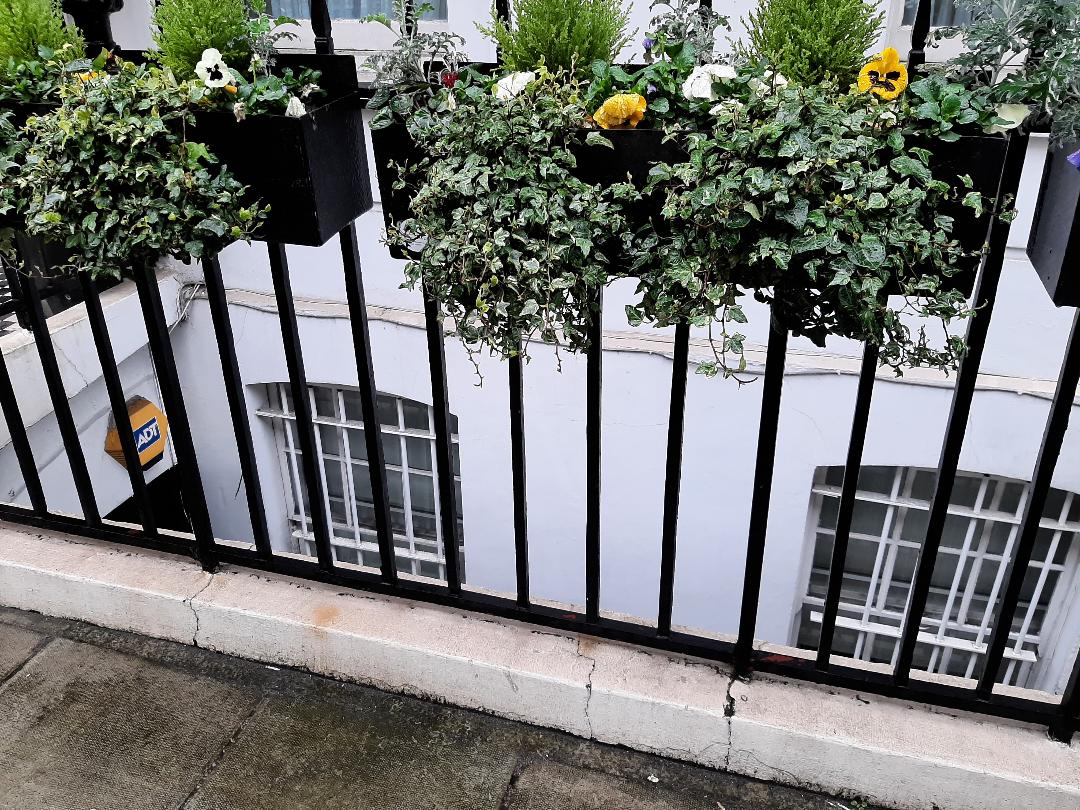 Brian Epstein had been encouraging John and Paul to try to write something that would go over well with American audiences, since their earlier releases had flopped so badly there. With that in mind, the both of them convened in the “rambling basement” of Richard and Margaret Asher’s house on 57 Wimpole Street in the west end of London in September of 1963 (while on holiday) in order to write a song with American audiences specifically in mind. Paul had been dating their daughter, actress Jane Asher, since earlier in the year and was spending much time at her parents’ house whenever he was in London. He spent so much time there, in fact, that the “small, rather stuffy music room” in their basement, where Margaret Asher gave oboe lessons, became Paul and John's songwriting base for a while. This continued after Paul accepted the invitation to move into their attic room on Wimpole Street permanently. Brian Epstein had been encouraging John and Paul to try to write something that would go over well with American audiences, since their earlier releases had flopped so badly there. With that in mind, the both of them convened in the “rambling basement” of Richard and Margaret Asher’s house on 57 Wimpole Street in the west end of London in September of 1963 (while on holiday) in order to write a song with American audiences specifically in mind. Paul had been dating their daughter, actress Jane Asher, since earlier in the year and was spending much time at her parents’ house whenever he was in London. He spent so much time there, in fact, that the “small, rather stuffy music room” in their basement, where Margaret Asher gave oboe lessons, became Paul and John's songwriting base for a while. This continued after Paul accepted the invitation to move into their attic room on Wimpole Street permanently.
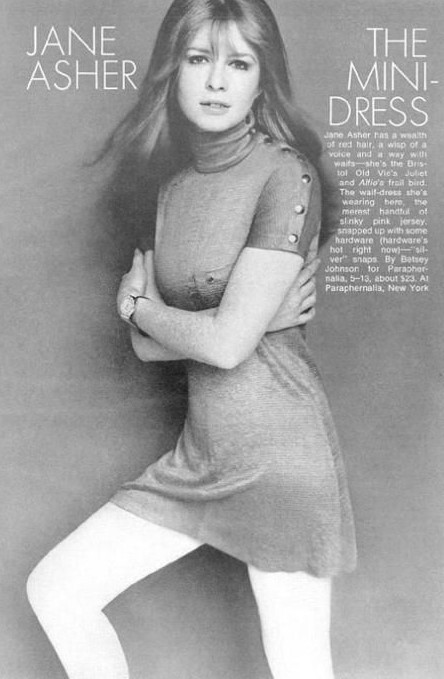 Lennon describes the writing of this song as a 50/50 collaboration, “one on one, eyeball to eyeball,” which Paul agrees with. "I remember when we got the chord that made the song," Lennon remembers. "We were in Jane Asher's house, downstairs in the cellar playing on the piano at the same time. And we had ‘oh, you-u-u…got that something…’ And Paul hits this chord and I turn to him and say, ‘That’s it!...Do that again!’ In those days we really used to absolutely write like that - both playing into each others' noses.” That chord, a B7 as heard when they first sing the lyric "I want to hold your hand," became the inspiration of the moment which propelled them through the rest of the song. Lennon describes the writing of this song as a 50/50 collaboration, “one on one, eyeball to eyeball,” which Paul agrees with. "I remember when we got the chord that made the song," Lennon remembers. "We were in Jane Asher's house, downstairs in the cellar playing on the piano at the same time. And we had ‘oh, you-u-u…got that something…’ And Paul hits this chord and I turn to him and say, ‘That’s it!...Do that again!’ In those days we really used to absolutely write like that - both playing into each others' noses.” That chord, a B7 as heard when they first sing the lyric "I want to hold your hand," became the inspiration of the moment which propelled them through the rest of the song.
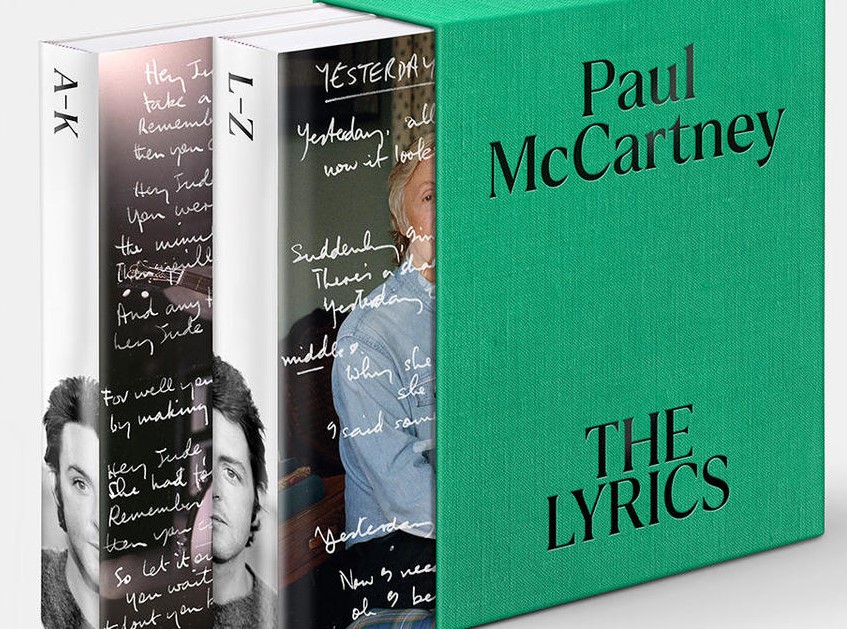 In McCartney's 2021 book "The Lyrics," he recalls: "One of the things I always thought was the secret of The Beatles was that our music was self-taught. We were never consciously thinking of what we were doing. Anything we did came naturally. A breathtaking chord change wouldn't happen because we knew how that chord related to another chord. We wern't able to read music or write it down, so we just made it up. My dad was exactly the same. And there's a certain joy that comes into your stuff if you didn't mean it, if you didn't try to make it happen and it happens of its own accord. There's a certain magic about that. So much of what we did came from a deep sense of wonder rather than study. We didn't really study music at all." In McCartney's 2021 book "The Lyrics," he recalls: "One of the things I always thought was the secret of The Beatles was that our music was self-taught. We were never consciously thinking of what we were doing. Anything we did came naturally. A breathtaking chord change wouldn't happen because we knew how that chord related to another chord. We wern't able to read music or write it down, so we just made it up. My dad was exactly the same. And there's a certain joy that comes into your stuff if you didn't mean it, if you didn't try to make it happen and it happens of its own accord. There's a certain magic about that. So much of what we did came from a deep sense of wonder rather than study. We didn't really study music at all."
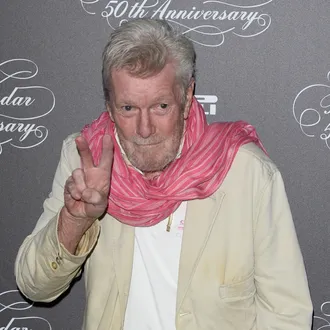 John appears to have been influenced by photographer Robert Freeman (who took the legendary “Meet The Beatles!” photograph) for a particular part of the song. Robert Freeman, who lived in an apartment beneath Lennon’s place in Kensington, was trying to educate John in jazz and experimental music. One track on an album Freeman introduced to him had a “musical phrase repeated, as if the record had stuck,” according to Freeman. John used this effect on the lines “I can’t hide, I can’t hide, I can’t hide.” John appears to have been influenced by photographer Robert Freeman (who took the legendary “Meet The Beatles!” photograph) for a particular part of the song. Robert Freeman, who lived in an apartment beneath Lennon’s place in Kensington, was trying to educate John in jazz and experimental music. One track on an album Freeman introduced to him had a “musical phrase repeated, as if the record had stuck,” according to Freeman. John used this effect on the lines “I can’t hide, I can’t hide, I can’t hide.”
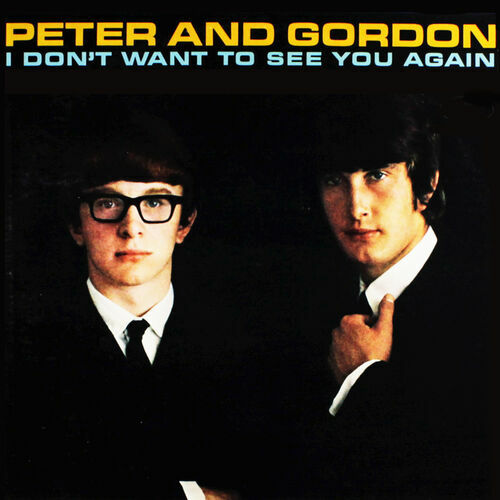 Gordon Waller, friend of Peter Asher who formed the popular duo Peter and Gordon, remembers being there that day. Gordon Waller recalls being invited down to hear John and Paul play an early rendition of their new creation. John played pedal organ while Paul was on piano for this early performance. "It wasn’t totally complete,” says Gordon Waller, adding: “but the structure and the chorus were there." Gordon Waller, friend of Peter Asher who formed the popular duo Peter and Gordon, remembers being there that day. Gordon Waller recalls being invited down to hear John and Paul play an early rendition of their new creation. John played pedal organ while Paul was on piano for this early performance. "It wasn’t totally complete,” says Gordon Waller, adding: “but the structure and the chorus were there."
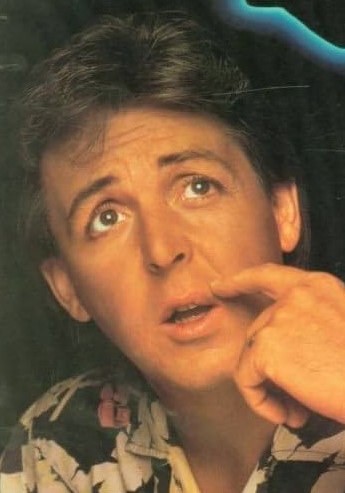 "There was an eroticism behind it all," Paul relates in "The Lyrics." "If I'd heard myself use that word when I was seventeen, there would have been a guffaw. But eroticism was very much a driving force behind everything I did. It's a very strong thing. And, you know, that was what lay behind a lot of these love songs. 'I want to hold your hand,' open brackets, (and probably do a lot more!)...'I Want To Hold Your Hand' is not about Jane (Asher), but it was certainly written when I was with her. To tell you the truth, I think we were writing more to a general audience. I may have been drawing on my experience with a person I was in love with at the time - and sometimes it was very specific - but mostly we were writing to the world." "There was an eroticism behind it all," Paul relates in "The Lyrics." "If I'd heard myself use that word when I was seventeen, there would have been a guffaw. But eroticism was very much a driving force behind everything I did. It's a very strong thing. And, you know, that was what lay behind a lot of these love songs. 'I want to hold your hand,' open brackets, (and probably do a lot more!)...'I Want To Hold Your Hand' is not about Jane (Asher), but it was certainly written when I was with her. To tell you the truth, I think we were writing more to a general audience. I may have been drawing on my experience with a person I was in love with at the time - and sometimes it was very specific - but mostly we were writing to the world."
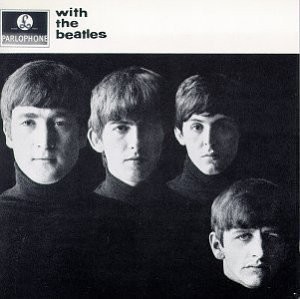 Their excitement with the song led to them introducing it to George and Ringo and fine-tuning it before their very next recording session, which was on October 17th, 1963. The song appears to have already been pigeon-holed for their next single, since their second album, “With The Beatles,” was almost fully completed at the time of recording. Their excitement with the song led to them introducing it to George and Ringo and fine-tuning it before their very next recording session, which was on October 17th, 1963. The song appears to have already been pigeon-holed for their next single, since their second album, “With The Beatles,” was almost fully completed at the time of recording.
Recording History
 The recording history for the song is quite uncomplicated. The group only needed one day to start and finish this song, since they had already fine-tuned it prior to setting foot in EMI Studio Two on October 17th, 1963, which was just four days after the group's defining October 13th, 1963 performance on the popular British TV show "Sunday Night At The London Palladium," drawing up to 15 million viewers in their home country. The recording history for the song is quite uncomplicated. The group only needed one day to start and finish this song, since they had already fine-tuned it prior to setting foot in EMI Studio Two on October 17th, 1963, which was just four days after the group's defining October 13th, 1963 performance on the popular British TV show "Sunday Night At The London Palladium," drawing up to 15 million viewers in their home country.
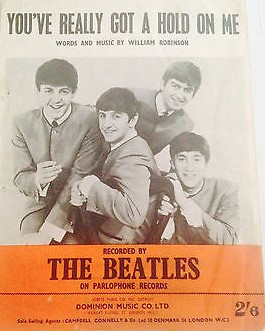 Seventeen takes of the song were recorded during this afternoon / evening session, which started at 2:30 and ended at 10 pm (including an hour and a half break from 5:30 to 7 pm.). It appears that the song officially began being worked on at 7 pm, since the first items recorded on this day included the first edition of their “Beatles’ Christmas Record” which, starting with an edit of the recording done on this day, would be sent on a flexi-disc to members of their Official Beatles Fan Club. Also recorded in the earlier session on this day was an attempt at a remake ("take 12") of The Miracles’ hit “You’ve Really Got A Hold On Me,” which they ended up not using, deciding that the version they recorded on July 18th, 1963 would suffice after all. Seventeen takes of the song were recorded during this afternoon / evening session, which started at 2:30 and ended at 10 pm (including an hour and a half break from 5:30 to 7 pm.). It appears that the song officially began being worked on at 7 pm, since the first items recorded on this day included the first edition of their “Beatles’ Christmas Record” which, starting with an edit of the recording done on this day, would be sent on a flexi-disc to members of their Official Beatles Fan Club. Also recorded in the earlier session on this day was an attempt at a remake ("take 12") of The Miracles’ hit “You’ve Really Got A Hold On Me,” which they ended up not using, deciding that the version they recorded on July 18th, 1963 would suffice after all.
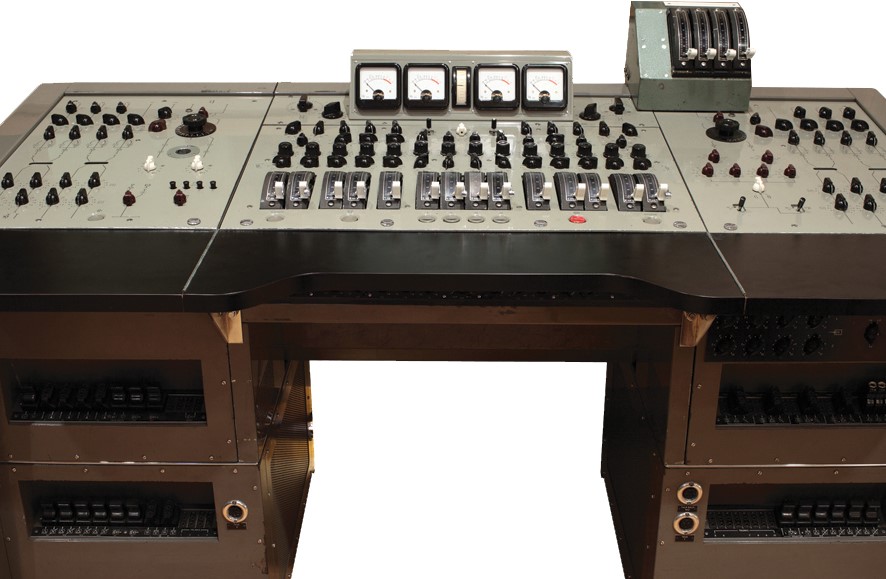 John Lennon insisted on trying a remake of “You’ve Really Got A Hold On Me” on this day, no doubt, because this was the first day The Beatles were allowed by EMI to use a four-track recording console for their recordings. Lennon was convinced that four-track recording would allow for this song to sound even better than what they had achieved on a two-track console. John Lennon insisted on trying a remake of “You’ve Really Got A Hold On Me” on this day, no doubt, because this was the first day The Beatles were allowed by EMI to use a four-track recording console for their recordings. Lennon was convinced that four-track recording would allow for this song to sound even better than what they had achieved on a two-track console.
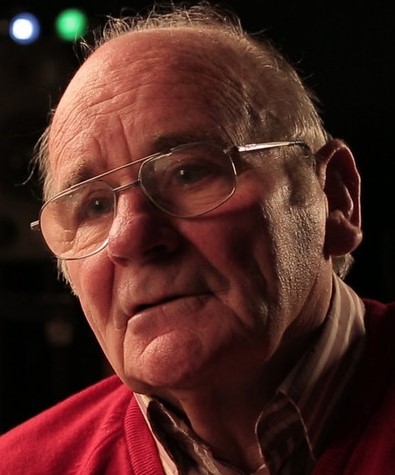 Everything The Beatles recorded prior to this day was on two-track recording equipment, which limited the possibilities one could achieve in the studio. With four-track recording, you could, according to engineer Ken Townsend, “do a basic rhythm track and then add on vocals and whatever else later. It made the studios into much more of a workshop.” EMI previously had four-track recording equipment but they only used it for more serious recording artists, such as in the case of classical music. They didn’t feel that popular music needed to utilize the advanced capabilities that four-track recording could provide. Everything The Beatles recorded prior to this day was on two-track recording equipment, which limited the possibilities one could achieve in the studio. With four-track recording, you could, according to engineer Ken Townsend, “do a basic rhythm track and then add on vocals and whatever else later. It made the studios into much more of a workshop.” EMI previously had four-track recording equipment but they only used it for more serious recording artists, such as in the case of classical music. They didn’t feel that popular music needed to utilize the advanced capabilities that four-track recording could provide.
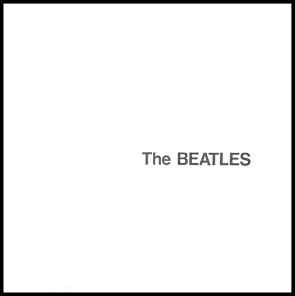 Since The Beatles had by that time earned much more money for EMI than had the classical releases, EMI felt that The Beatles earned their keep and offered them four-track capabilities from this date on. It is quite coincidental that, starting with this monumental recording, The Beatles were ushered into a new era of recording technology that then continued with them throughout their recording careers until 1968 when, during the recording of their ‘White Album,’ EMI studios graduated to the even more advanced eight-track recording console. Since The Beatles had by that time earned much more money for EMI than had the classical releases, EMI felt that The Beatles earned their keep and offered them four-track capabilities from this date on. It is quite coincidental that, starting with this monumental recording, The Beatles were ushered into a new era of recording technology that then continued with them throughout their recording careers until 1968 when, during the recording of their ‘White Album,’ EMI studios graduated to the even more advanced eight-track recording console.
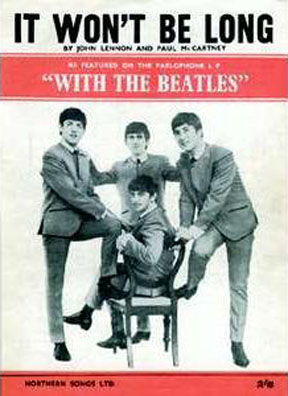 After their abandoned attempt at recreating “You’ve Really Got A Hold On Me,” Lennon confidently called up to George Martin in the control booth, “you’d better come on down here and have a listen to our next #1 record.” This statement solidifies two things: first, that “It Won’t Be Long” was no longer in consideration for their next single by this time (as originally planned) and, second, that George Martin was still being utilized by The Beatles for his expertise in arrangement. In this case, with the exception of a slight change in tempo and adjustments in vocal harmonies, the song was perfectly arranged in advance by they themselves. There was little that George Martin needed to do to improve it. After their abandoned attempt at recreating “You’ve Really Got A Hold On Me,” Lennon confidently called up to George Martin in the control booth, “you’d better come on down here and have a listen to our next #1 record.” This statement solidifies two things: first, that “It Won’t Be Long” was no longer in consideration for their next single by this time (as originally planned) and, second, that George Martin was still being utilized by The Beatles for his expertise in arrangement. In this case, with the exception of a slight change in tempo and adjustments in vocal harmonies, the song was perfectly arranged in advance by they themselves. There was little that George Martin needed to do to improve it.
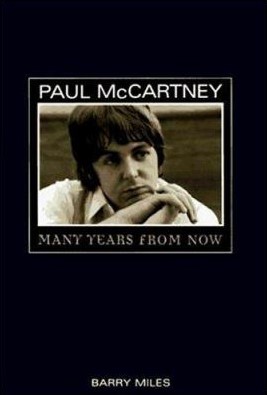 When listening to the 17 takes (some false starts) of the song, you can’t help but notice McCartney’s leadership role in full force even at this early stage of The Beatles’ career. His bossiness is apparent throughout the session, such as at the beginning of "take one" where, when Lennon suggests doing it slower, Paul quickly asserts “NO…shhh!” and demands a “clean beginning,” as well as instructing Ringo on the “attack” needed at the beginning of the song. Paul later admitted in his book "Many Years From Now": “I heard tapes recently of me counting in 'I Want To Hold Your Hand'...and I'm being pretty bossy: 'Shhh, shhh! Clean beginning, c'mon everyone. One, two, no, c'mon get it right!' and I could see how that could get on your nerves...Yes, okay, in the studio I could be overbearing, because I wanted to get it right.” Nonetheless, as Ringo admitted, Paul’s bossiness “contributed to really great products” as was the case with this song. McCartney’s determination may have been just what was needed in order to achieve the greatness that “I Want To Hold Your Hand” achieved. When listening to the 17 takes (some false starts) of the song, you can’t help but notice McCartney’s leadership role in full force even at this early stage of The Beatles’ career. His bossiness is apparent throughout the session, such as at the beginning of "take one" where, when Lennon suggests doing it slower, Paul quickly asserts “NO…shhh!” and demands a “clean beginning,” as well as instructing Ringo on the “attack” needed at the beginning of the song. Paul later admitted in his book "Many Years From Now": “I heard tapes recently of me counting in 'I Want To Hold Your Hand'...and I'm being pretty bossy: 'Shhh, shhh! Clean beginning, c'mon everyone. One, two, no, c'mon get it right!' and I could see how that could get on your nerves...Yes, okay, in the studio I could be overbearing, because I wanted to get it right.” Nonetheless, as Ringo admitted, Paul’s bossiness “contributed to really great products” as was the case with this song. McCartney’s determination may have been just what was needed in order to achieve the greatness that “I Want To Hold Your Hand” achieved.
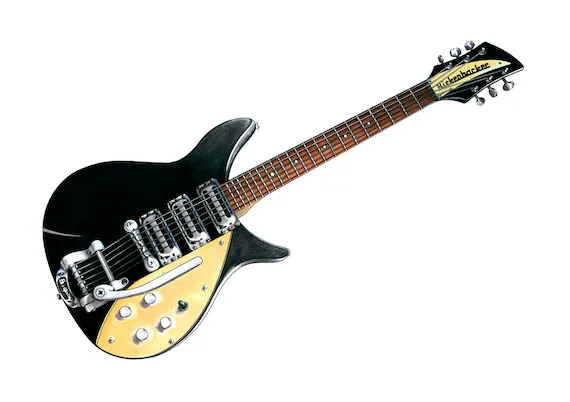 It has been noted that "take one" sounded very similar in structure to the final take because of their knowing the song so well by the time they entered the studio on this day. What is noticed is that there were new ideas that progressively entered into the mix as the sessions wore on. One of these was on "take two" where they began to hush the instrumentation on the bridge, rather than the rocking rhythm guitar that Lennon played on "take one." Another idea, beginning with "take four," was McCartney’s adding the familiar “sh” sound to words with an “s” sound, such as in “I think you’ll undershtand” and “shay that shomthing.” This habit was something The Beatles heard on American records and, by coincidence, made for better mastering because of the absence of sibilance, or distorted “s” sounds. It has been noted that "take one" sounded very similar in structure to the final take because of their knowing the song so well by the time they entered the studio on this day. What is noticed is that there were new ideas that progressively entered into the mix as the sessions wore on. One of these was on "take two" where they began to hush the instrumentation on the bridge, rather than the rocking rhythm guitar that Lennon played on "take one." Another idea, beginning with "take four," was McCartney’s adding the familiar “sh” sound to words with an “s” sound, such as in “I think you’ll undershtand” and “shay that shomthing.” This habit was something The Beatles heard on American records and, by coincidence, made for better mastering because of the absence of sibilance, or distorted “s” sounds.
 Although the actual track information appears to be lost, we do know that the song took a whopping 17 takes to perfect, which included all four Beatles playing and singing simultaneously. This song was the studio debut of Paul’s newly acquired 1963 Hofner bass, his original 1961 model having “seen so much work that it was held together with sellotape,” explained McCartney in 1967. As witnessed by engineer Geoff Emerick, Lennon kept flubbing his vocals throughout the song, which no doubt led to them needing so many takes to get it right. It was suggested by Geoff Emerick that these mistakes were due to either his usual poor memory or his even poorer eyesight. Although the actual track information appears to be lost, we do know that the song took a whopping 17 takes to perfect, which included all four Beatles playing and singing simultaneously. This song was the studio debut of Paul’s newly acquired 1963 Hofner bass, his original 1961 model having “seen so much work that it was held together with sellotape,” explained McCartney in 1967. As witnessed by engineer Geoff Emerick, Lennon kept flubbing his vocals throughout the song, which no doubt led to them needing so many takes to get it right. It was suggested by Geoff Emerick that these mistakes were due to either his usual poor memory or his even poorer eyesight.
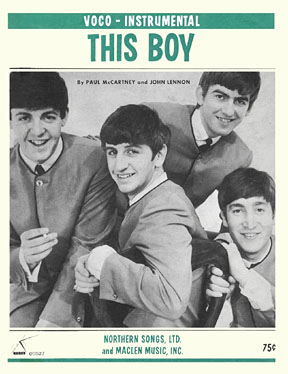 Handclaps as well as double-tracking Lennon's lead vocals were then added as overdubs onto a finished "take 17." The overdubbed handclaps were performed by all four Beatles huddled around one microphone, clowning around as they usually did, which was evidence of the fun atmosphere obtained whenever The Beatles were in the recording studio. Since the complete recording of the song’s British b-side, “This Boy” was also recorded on this day, we can estimate that “I Want To Hold Your Hand” was recorded between 7 and 8:30 pm on October 17th, 1963. Handclaps as well as double-tracking Lennon's lead vocals were then added as overdubs onto a finished "take 17." The overdubbed handclaps were performed by all four Beatles huddled around one microphone, clowning around as they usually did, which was evidence of the fun atmosphere obtained whenever The Beatles were in the recording studio. Since the complete recording of the song’s British b-side, “This Boy” was also recorded on this day, we can estimate that “I Want To Hold Your Hand” was recorded between 7 and 8:30 pm on October 17th, 1963.
 The song was mixed for mono and stereo on October 21st, 1963 with only George Martin and Engineer Norman Smith present. The mono mix was used for the worldwide single release and the stereo version ended up being released only on an Australian single. With an advance order of one million copies in Britain, this mono mix totally saturated the market in the UK, the only reason it was initially kept out of the #1 spot on the British charts being the resurgence in popularity of their previous single, "She Loves You." Once "I Want To Hold Your Hand" acheived the top spot in their native country, it stayed there for five weeks (a total of 21 weeks in the Top 50) and sold 1.25 million in the UK alone, second only to the 1.3 million that "She Loves You" sold. These two singles were the biggest selling records in Britain throughout the '60s. The song was mixed for mono and stereo on October 21st, 1963 with only George Martin and Engineer Norman Smith present. The mono mix was used for the worldwide single release and the stereo version ended up being released only on an Australian single. With an advance order of one million copies in Britain, this mono mix totally saturated the market in the UK, the only reason it was initially kept out of the #1 spot on the British charts being the resurgence in popularity of their previous single, "She Loves You." Once "I Want To Hold Your Hand" acheived the top spot in their native country, it stayed there for five weeks (a total of 21 weeks in the Top 50) and sold 1.25 million in the UK alone, second only to the 1.3 million that "She Loves You" sold. These two singles were the biggest selling records in Britain throughout the '60s.
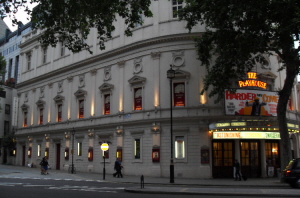 The Beatles recorded the song a total of three times for BBC radio broadcasts, all of these recordings being done very shortly after the release of the British single. The song's first BBC recording was on December 17th, 1963 at Playhouse Theatre in London between 3 and 6:30 pm for the BBC radio show “Saturday Club,” this produced by Jimmy Grant and Bernie Andrews and broadcast on December 21st between 10 am and 12 noon. Interestingly, since this was the Christmas episode of this famous show, The Beatles also recorded a 29-second selection entitled "Chrimble Mudley," which comprised a small excerpt of their first five singles, the most recent being "I Want To Hold Your Hand," along with a bit of "Rudolph The Red-Nosed Reindeer," this also being produced by Jimmy Grant and Bernie Andrews and broadcast on during this same show. The Beatles recorded the song a total of three times for BBC radio broadcasts, all of these recordings being done very shortly after the release of the British single. The song's first BBC recording was on December 17th, 1963 at Playhouse Theatre in London between 3 and 6:30 pm for the BBC radio show “Saturday Club,” this produced by Jimmy Grant and Bernie Andrews and broadcast on December 21st between 10 am and 12 noon. Interestingly, since this was the Christmas episode of this famous show, The Beatles also recorded a 29-second selection entitled "Chrimble Mudley," which comprised a small excerpt of their first five singles, the most recent being "I Want To Hold Your Hand," along with a bit of "Rudolph The Red-Nosed Reindeer," this also being produced by Jimmy Grant and Bernie Andrews and broadcast on during this same show.
.jpg) Their second BBC recording was on December 18th, 1963 at BBC Paris Studio in London between 7 and 10:30 pm, which was produced by Bryant Marriott and featured in the first installment of their radio show “From Us To You,” which aired on "boxing day," December 26th, 1963 between 10 am and 12 noon. The final BBC recording of the song was on January 7th, 1964 at Playhouse Theatre in London between 2:30 and 4 pm for another episode of "Saturday Club," which was produced by Jimmy Grant and Bernie Andrews and broadcast on February 15th of that year between 10 am and 12 noon. Their second BBC recording was on December 18th, 1963 at BBC Paris Studio in London between 7 and 10:30 pm, which was produced by Bryant Marriott and featured in the first installment of their radio show “From Us To You,” which aired on "boxing day," December 26th, 1963 between 10 am and 12 noon. The final BBC recording of the song was on January 7th, 1964 at Playhouse Theatre in London between 2:30 and 4 pm for another episode of "Saturday Club," which was produced by Jimmy Grant and Bernie Andrews and broadcast on February 15th of that year between 10 am and 12 noon.
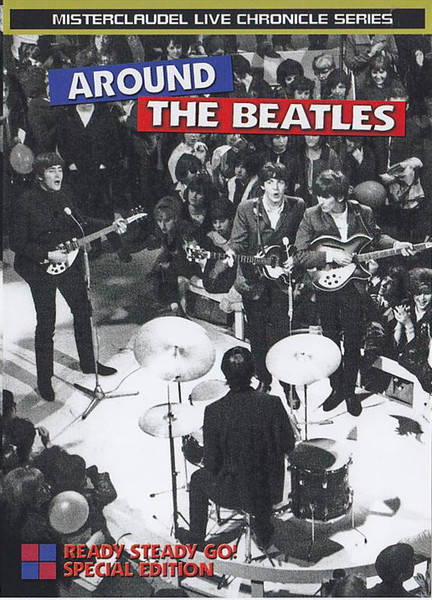 Another recording session for "I Want To Hold Your Hand" took place on April 19th, 1964. Its purpose was to provide a pre-recorded soundtrack for the British television special “Around The Beatles,” which was broadcast by the BBC on May 6th and June 8th, 1964. The song was recorded and edited with new recordings of the first four British singles to comprise a “Beatles Medley” for the group to lip-sync to in front of a studio audience. This session, which was recorded on three-track tape, took place at IBC Studios in London, England, with Jack Good as producer and Terry Johnson as engineer. Another recording session for "I Want To Hold Your Hand" took place on April 19th, 1964. Its purpose was to provide a pre-recorded soundtrack for the British television special “Around The Beatles,” which was broadcast by the BBC on May 6th and June 8th, 1964. The song was recorded and edited with new recordings of the first four British singles to comprise a “Beatles Medley” for the group to lip-sync to in front of a studio audience. This session, which was recorded on three-track tape, took place at IBC Studios in London, England, with Jack Good as producer and Terry Johnson as engineer.
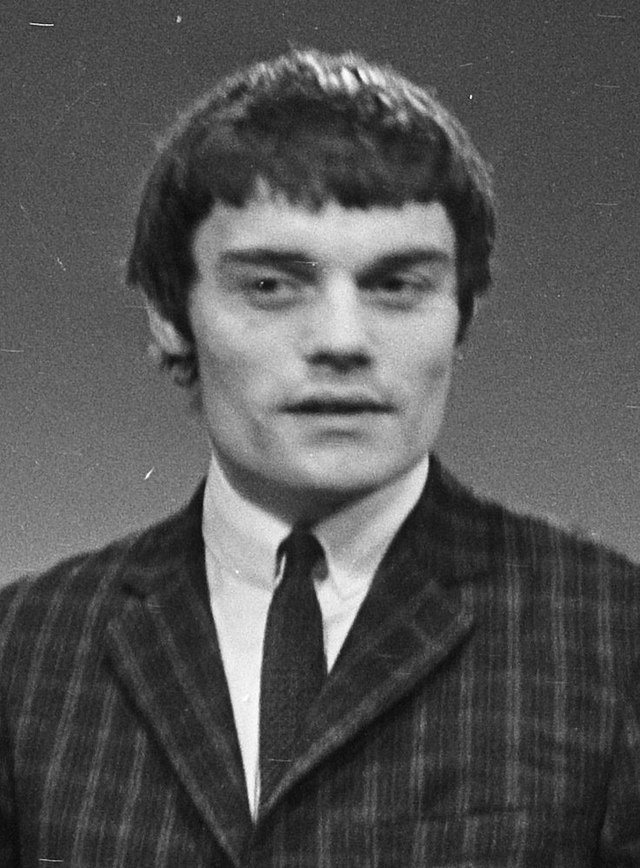 The song was played one other time at EMI studios. Since Ringo was detained in Britian because of his tonsils as well as pharyngitis, a replacement drummer needed to be auditioned to take his place for The Beatles’ upcoming world tour. Session drummer Jimmy Nicol was brought into EMI Studio Two to rehearse six songs, including “I Want To Hold Your Hand,” on June 3rd, 1964. The session was not recorded, but the audition was a success. The next day, the four of them were in Copenhagen giving their first concert on the world tour. The song was played one other time at EMI studios. Since Ringo was detained in Britian because of his tonsils as well as pharyngitis, a replacement drummer needed to be auditioned to take his place for The Beatles’ upcoming world tour. Session drummer Jimmy Nicol was brought into EMI Studio Two to rehearse six songs, including “I Want To Hold Your Hand,” on June 3rd, 1964. The session was not recorded, but the audition was a success. The next day, the four of them were in Copenhagen giving their first concert on the world tour.
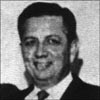 The recording sessions for the song also include one live performance on August 23rd, 1964. That was the date The Beatles played at the Hollywood Bowl in Los Angeles, California. The entire concert was recorded with the intention of releasing it as a live album by the end of 1964, which never happened. Capitol vice-president Voyle Gilmore produced the recording along with George Martin and with Hugh Davies as engineer. A rough stereo mix was made on August 27th, 1964 but their live recording of "I Want To Hold Your Hand" remains in the vaults until this day. The recording sessions for the song also include one live performance on August 23rd, 1964. That was the date The Beatles played at the Hollywood Bowl in Los Angeles, California. The entire concert was recorded with the intention of releasing it as a live album by the end of 1964, which never happened. Capitol vice-president Voyle Gilmore produced the recording along with George Martin and with Hugh Davies as engineer. A rough stereo mix was made on August 27th, 1964 but their live recording of "I Want To Hold Your Hand" remains in the vaults until this day.
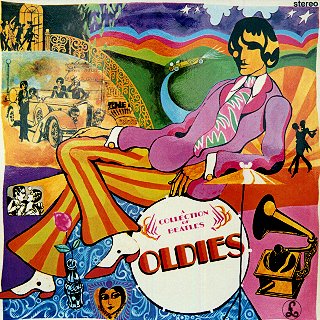 Two other stereo mixes of the official EMI recording of "I Want To Hold Your Hand" were made later. The second stereo mix was on June 8th, 1965 by Norman Smith and Engineer Ron Pender, who placed the vocals in the center of the mix. This mix was reportedly never used, at least not in Britain or the US. The third and final stereo mix of the song was done on November 7th, 1966 in preparation for the British compilation album “A Collection Of Beatles Oldies,” which was released in Britain on December 10th, 1966. This stereo mix, made by George Martin and engineers Geoff Emerick and Mike Stone, is the stereo mix used on CD to this day. An interesting note concerning the mix used for the stereo “Meet The Beatles!” album is that, even though a stereo mix was made in time for Capitol records to use for the album, it was not sent to America. Capitol hastily prepared a mock-stereo version of the song separating the lows on the left channel and the highs on the right channel. This means that a true stereo version of the song was not available in America until February 10th, 1984, this stereo mix appearing only on promotional copies of the 20th Anniversary edition of the Capitol single. Two other stereo mixes of the official EMI recording of "I Want To Hold Your Hand" were made later. The second stereo mix was on June 8th, 1965 by Norman Smith and Engineer Ron Pender, who placed the vocals in the center of the mix. This mix was reportedly never used, at least not in Britain or the US. The third and final stereo mix of the song was done on November 7th, 1966 in preparation for the British compilation album “A Collection Of Beatles Oldies,” which was released in Britain on December 10th, 1966. This stereo mix, made by George Martin and engineers Geoff Emerick and Mike Stone, is the stereo mix used on CD to this day. An interesting note concerning the mix used for the stereo “Meet The Beatles!” album is that, even though a stereo mix was made in time for Capitol records to use for the album, it was not sent to America. Capitol hastily prepared a mock-stereo version of the song separating the lows on the left channel and the highs on the right channel. This means that a true stereo version of the song was not available in America until February 10th, 1984, this stereo mix appearing only on promotional copies of the 20th Anniversary edition of the Capitol single.
 Sometime in 2015 Giles Martin (son of George Martin) and engineer Sam Okell revisited the master tape of "I Want To Hold Your Hand" in Abbey Road Studios to create a new stereo mix, the result being included on the newly mixed "Beatles 1" compilation album released that year. Then, sometime in 2016, he received access to the live recording The Beatles made of the song at the Hollywood Bowl on August 23rd, 1964 and produced a version for inclusion on the long-awaited remastered version of "Live At The Hollywood Bowl" which came out later that year. Sometime in 2015 Giles Martin (son of George Martin) and engineer Sam Okell revisited the master tape of "I Want To Hold Your Hand" in Abbey Road Studios to create a new stereo mix, the result being included on the newly mixed "Beatles 1" compilation album released that year. Then, sometime in 2016, he received access to the live recording The Beatles made of the song at the Hollywood Bowl on August 23rd, 1964 and produced a version for inclusion on the long-awaited remastered version of "Live At The Hollywood Bowl" which came out later that year.
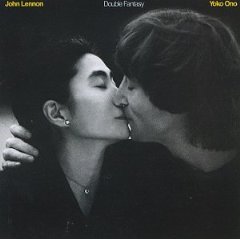 The last time the song was brought into a recording studio by a Beatle was sometime in August or September of 1980. John Lennon was recording his classic 1980 album “Double Fantasy” and at times old Beatles music was heard during the sessions. Engineer Lee DeCario relates: "I remember we were editing something and John was bored so he went out into the studio, grabbed the Fender Telecaster B-bender guitar that Rick Nielsen (from Cheap Trick) gave him, plugged it in, and sat on the amp all day playing Beatles songs. It was great, you’d walk by and you’d hear him singing and playing ‘I Want To Hold Your Hand.’" The last time the song was brought into a recording studio by a Beatle was sometime in August or September of 1980. John Lennon was recording his classic 1980 album “Double Fantasy” and at times old Beatles music was heard during the sessions. Engineer Lee DeCario relates: "I remember we were editing something and John was bored so he went out into the studio, grabbed the Fender Telecaster B-bender guitar that Rick Nielsen (from Cheap Trick) gave him, plugged it in, and sat on the amp all day playing Beatles songs. It was great, you’d walk by and you’d hear him singing and playing ‘I Want To Hold Your Hand.’"
 Sometime in 2023, Giles Martin was given the task of creating a "demix remix" of "I Want To Hold Your Hand" for inclusion on the 50th Anniversary edition of the compilation album "The Beatles / 1962 - 1966" (aka "The Red Album"). With Peter Jackson's AI technology at his disposal, Giles Martin was able to utilize this "new machine-learning techology" so that "individual elements that were put to tape...and were therefore impossible to separate" could be "untangled, allowing Giles to put the original recordings back together with even greater clarity and impact," as stated by John Harris in the liner notes of the above mentioned album. The "clarity and impact" is especially witnessed here on "I Want To Hold Your Hand," which is arguably the best presentation of the song to date. Sometime in 2023, Giles Martin was given the task of creating a "demix remix" of "I Want To Hold Your Hand" for inclusion on the 50th Anniversary edition of the compilation album "The Beatles / 1962 - 1966" (aka "The Red Album"). With Peter Jackson's AI technology at his disposal, Giles Martin was able to utilize this "new machine-learning techology" so that "individual elements that were put to tape...and were therefore impossible to separate" could be "untangled, allowing Giles to put the original recordings back together with even greater clarity and impact," as stated by John Harris in the liner notes of the above mentioned album. The "clarity and impact" is especially witnessed here on "I Want To Hold Your Hand," which is arguably the best presentation of the song to date.
Song Structure and Style
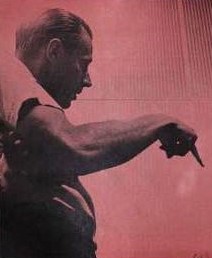 While the structure of this song follows the familiar pattern of most of the early Beatles catalog, namely the 'verse/ verse/ bridge/ verse' structure (or aaba) it is anything but ordinary, because there are so many interesting surprises along the way. Since Lennon and McCartney were painstakingly working to make this song palatable to American audiences, we hear many unique characteristics in the arrangement, no doubt including suggestions made by George Martin in the studio. While the structure of this song follows the familiar pattern of most of the early Beatles catalog, namely the 'verse/ verse/ bridge/ verse' structure (or aaba) it is anything but ordinary, because there are so many interesting surprises along the way. Since Lennon and McCartney were painstakingly working to make this song palatable to American audiences, we hear many unique characteristics in the arrangement, no doubt including suggestions made by George Martin in the studio.
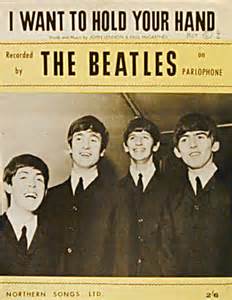 It was decided to begin the song with the final repetitive four and a half measures of the bridge played instrumentally with a driving beat, creating an intense excitement that was meant to herald the appearance of Beatlemania in the states, saying, in effect, "Here We Are." This was the repetitive influence, it is claimed, from Robert Freeman's jazz record noted above. It was decided to begin the song with the final repetitive four and a half measures of the bridge played instrumentally with a driving beat, creating an intense excitement that was meant to herald the appearance of Beatlemania in the states, saying, in effect, "Here We Are." This was the repetitive influence, it is claimed, from Robert Freeman's jazz record noted above.
What is striking about this introduction, and confusing as well, is how the song begins midway through the measure with the accent on the last eighth note of the measure instead of the one beat of the next measure. Upon hearing the song for the first time (if we can possibly remember the first time we heard it), the listener is thrown off balance by the ambiguity created. The down beat of the song is only fully recognized when the vocal quarter notes are heard. That is why the equilibrium of dancers as well as listeners was thrown off by this introduction, although the effect is only momentary. We all found our footing after the first eight seconds had passed and then we got it.
 We now enter into the first verse, which comprises twelve measures. The vocals are sung in unison by John and Paul for the first seven measures of each verse, only to strikingly change into high register harmony on the word "hand" sung during the second appearance of the B7 chord on the eighth measure of the verse. That eighth measure was where all the focus was directed, since everyone played and sang differently on that measure. Ringo played accents and drum fills, John stopped playing altogether, Paul held the one note on the bass, and the overdubbed handclaps, which maintained a regular pattern throughout the first seven measures, dropped out for the remainder of the verse only to resume when the next verse began. William Mann, music critic of The Times in London, described the eighth measure of the verses as an "octave accent" and a "median" chord change, referring to this as "a trademark of Lennon - McCartney songs." We now enter into the first verse, which comprises twelve measures. The vocals are sung in unison by John and Paul for the first seven measures of each verse, only to strikingly change into high register harmony on the word "hand" sung during the second appearance of the B7 chord on the eighth measure of the verse. That eighth measure was where all the focus was directed, since everyone played and sang differently on that measure. Ringo played accents and drum fills, John stopped playing altogether, Paul held the one note on the bass, and the overdubbed handclaps, which maintained a regular pattern throughout the first seven measures, dropped out for the remainder of the verse only to resume when the next verse began. William Mann, music critic of The Times in London, described the eighth measure of the verses as an "octave accent" and a "median" chord change, referring to this as "a trademark of Lennon - McCartney songs."
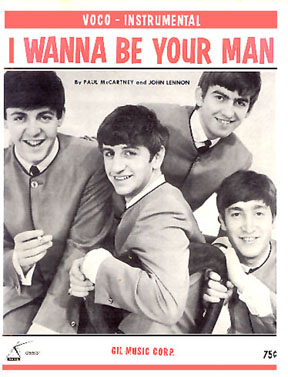 Continuing into the ninth measure, unison singing resumes throughout except, once again, on the word "hand" which is sung in a staggered descending melody line. Continuing into the ninth measure, unison singing resumes throughout except, once again, on the word "hand" which is sung in a staggered descending melody line.
The second verse is identical with its intricate structure, the only difference being the lyrics. These lyrics include the line "let me be your man" which, no doubt, was a throw-back to the recently written "I Wanna Be Your Man," which was sung by Ringo and recorded by The Rolling Stones that year.
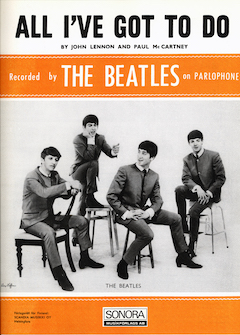 Entering the bridge, we now see a transition into a subdued but melodic feel for the first seven measures, which allows the tension to be momentarily relieved. We hear Ringo playing a closed hi-hat, Harrison picking single-note phrases from the chords, and McCartney innovatively playing multiple strings on his bass during the fifth and sixth measures, repeating the technique he used five weeks earlier on "All I've Got To Do," while unison singing is performed by John and Paul. This all changes midway through the seventh measure as we now see the origin of the introduction: The repetitive, supposedly Robert Freeman-inspired melodic phrase, punctuated by the same driving force heard at the beginning of the song. The vocals now strategically shift to harmony sung very powerfully, repeating the phrase "I can't hide" (or as Bob Dylan and many others thought, "I get high"). Entering the bridge, we now see a transition into a subdued but melodic feel for the first seven measures, which allows the tension to be momentarily relieved. We hear Ringo playing a closed hi-hat, Harrison picking single-note phrases from the chords, and McCartney innovatively playing multiple strings on his bass during the fifth and sixth measures, repeating the technique he used five weeks earlier on "All I've Got To Do," while unison singing is performed by John and Paul. This all changes midway through the seventh measure as we now see the origin of the introduction: The repetitive, supposedly Robert Freeman-inspired melodic phrase, punctuated by the same driving force heard at the beginning of the song. The vocals now strategically shift to harmony sung very powerfully, repeating the phrase "I can't hide" (or as Bob Dylan and many others thought, "I get high").
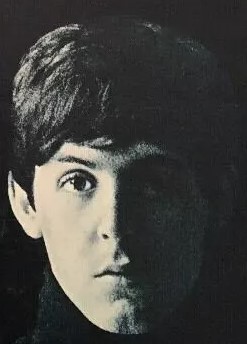 The bridge structure is a perfect segue into another verse, identical in structure to the first two except for different lyrics. Interestingly, the listener can detect someone, probably Paul, whisper the word "something" in the sixth measure just after the lyric "when I say that something" is heard. As another bridge is then performed in order to again relieve the tension, we see the introduction of harmony vocals throughout, which adds a dynamic touch to distract us from the identical lyrics of the previous bridge. Another change heard in this bridge is with Paul's bass playing, playing two strings simultaneously throughout the first seven measures this time instead of just the fifth and sixth measures as in the previous bridge. The bridge structure is a perfect segue into another verse, identical in structure to the first two except for different lyrics. Interestingly, the listener can detect someone, probably Paul, whisper the word "something" in the sixth measure just after the lyric "when I say that something" is heard. As another bridge is then performed in order to again relieve the tension, we see the introduction of harmony vocals throughout, which adds a dynamic touch to distract us from the identical lyrics of the previous bridge. Another change heard in this bridge is with Paul's bass playing, playing two strings simultaneously throughout the first seven measures this time instead of just the fifth and sixth measures as in the previous bridge.
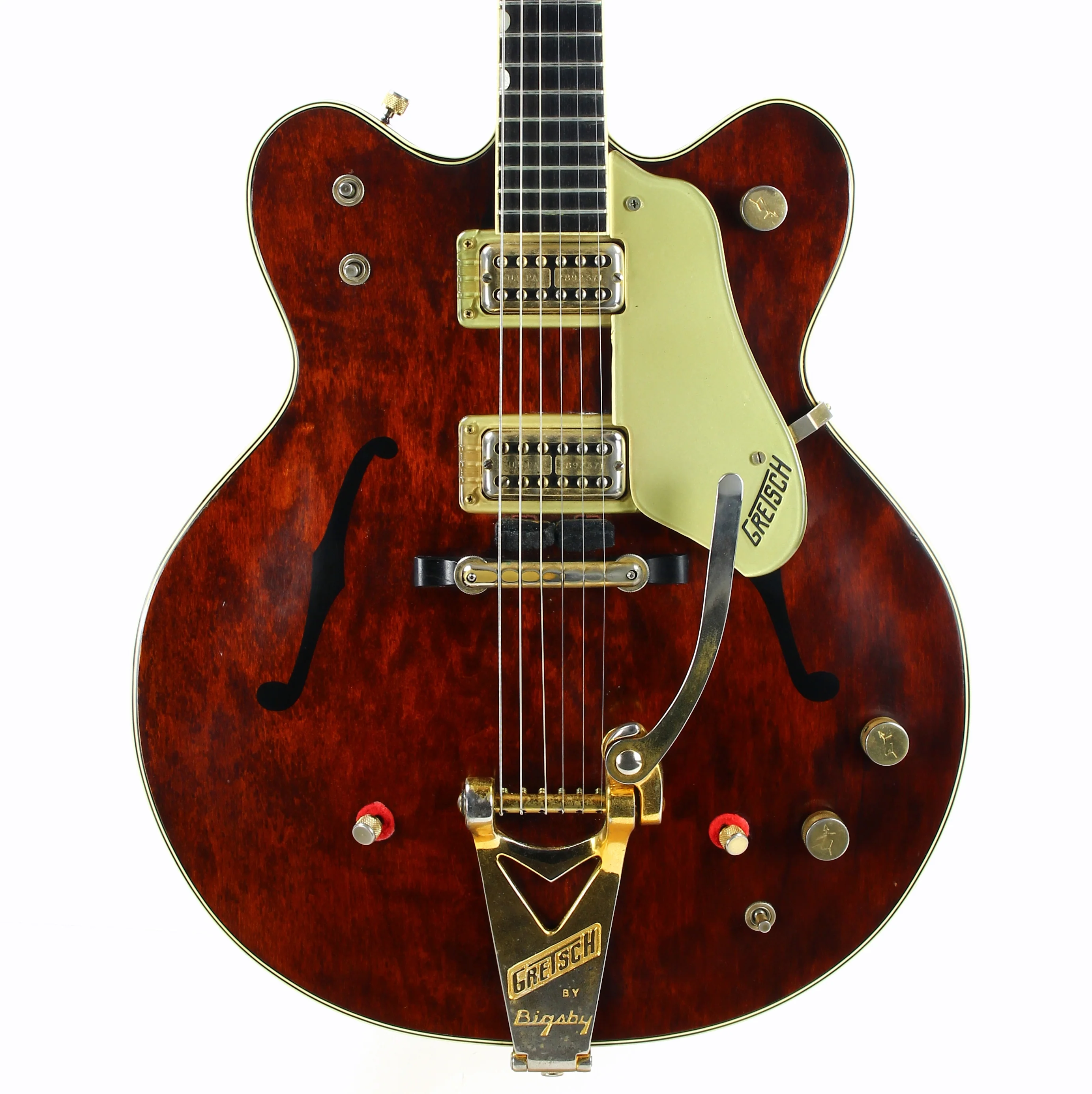 The fourth and final verse is then performed, which is virtually a repeat of the third verse, one of the differences being in the phrase "when I feel that something," instead of "say that something." The big difference, though, is that the verse comprises fifteen measures instead of twelve. The additional three measures consists of a dramatic conclusion which consists of the title of the song being repeated a fourth time with the word "hand" held out with Paul's high harmony for two full measures. For the first of those two measures (the fourteenth in the verse) the group plays in a hard-hitting waltz tempo accentuating each beat with a driving force before resolving into the G chord crating an "amen" cadence. No more suitable ending could be written for a song that would leave a nation breathless and, in the case of teenage females, screaming. The fourth and final verse is then performed, which is virtually a repeat of the third verse, one of the differences being in the phrase "when I feel that something," instead of "say that something." The big difference, though, is that the verse comprises fifteen measures instead of twelve. The additional three measures consists of a dramatic conclusion which consists of the title of the song being repeated a fourth time with the word "hand" held out with Paul's high harmony for two full measures. For the first of those two measures (the fourteenth in the verse) the group plays in a hard-hitting waltz tempo accentuating each beat with a driving force before resolving into the G chord crating an "amen" cadence. No more suitable ending could be written for a song that would leave a nation breathless and, in the case of teenage females, screaming.
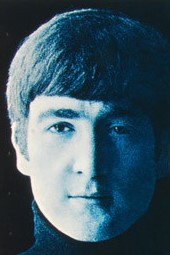 Even though John and Paul sing all of the lyrics completely through the song, Lennon can easily be designated the lead singer since McCartney is the one who lifts up to a higher harmony whenever the need arises, leaving John to sing the melody line. Paul's bass work is efficient but rudimentary throughout, only straying from the signature chord notes during the melodic instrumental phrase of the second and sixth measures of each verse. Even though John and Paul sing all of the lyrics completely through the song, Lennon can easily be designated the lead singer since McCartney is the one who lifts up to a higher harmony whenever the need arises, leaving John to sing the melody line. Paul's bass work is efficient but rudimentary throughout, only straying from the signature chord notes during the melodic instrumental phrase of the second and sixth measures of each verse.
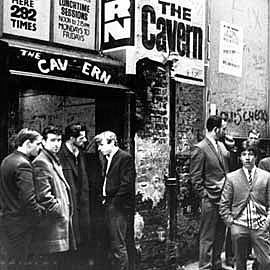 Lennon's rhythm guitar provides a structural backdrop for the dazzling effects sprinkled throughout the song, even simply providing a strummed guitar chord for each chord change in each bridge. Harrison's guitar phrases are used as casual accents throughout the song and, although not essential to the structure, they provide an interesting diversion during the framework of the song. Meanwhile, Ringo's drum work, while not the power-play he is capable of delivering using the 'beat' style of the Cavern Club days, is dependable and proficient utilizing suitable drum fills and powerful accents where needed. Lennon's rhythm guitar provides a structural backdrop for the dazzling effects sprinkled throughout the song, even simply providing a strummed guitar chord for each chord change in each bridge. Harrison's guitar phrases are used as casual accents throughout the song and, although not essential to the structure, they provide an interesting diversion during the framework of the song. Meanwhile, Ringo's drum work, while not the power-play he is capable of delivering using the 'beat' style of the Cavern Club days, is dependable and proficient utilizing suitable drum fills and powerful accents where needed.
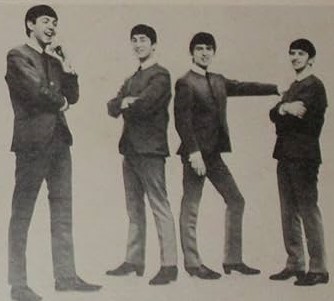 What is most definitely on display here, aside from the instrumentation, is the songwriting style of the Lennon / McCartney team as well as the overall effect the song creates. Standout musicianship is not called for here, such as in the case of guitar solos, walking bass lines, or rollicking drum beats. They don't distract us with musical showmanship in this song because it is not needed. The effervescent vocal delivery, along with its masterful songwriting, is all that was necessary to carry this masterpiece to the heights that it achieved. What is most definitely on display here, aside from the instrumentation, is the songwriting style of the Lennon / McCartney team as well as the overall effect the song creates. Standout musicianship is not called for here, such as in the case of guitar solos, walking bass lines, or rollicking drum beats. They don't distract us with musical showmanship in this song because it is not needed. The effervescent vocal delivery, along with its masterful songwriting, is all that was necessary to carry this masterpiece to the heights that it achieved.
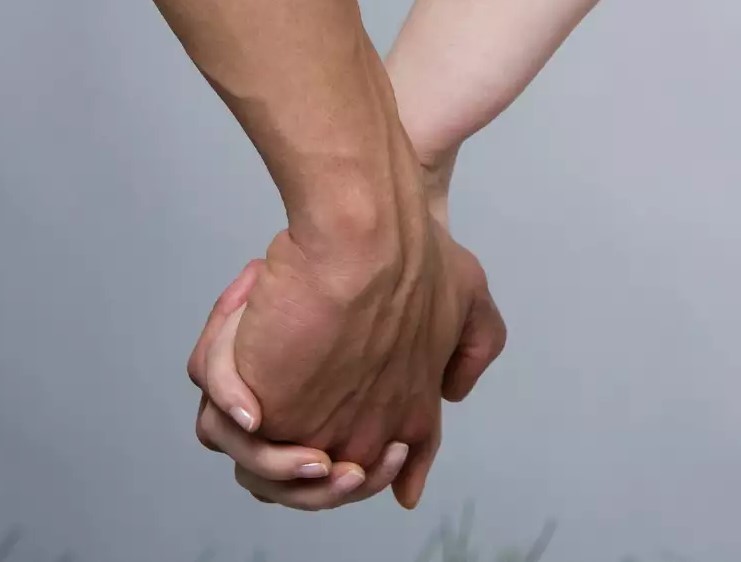 Lennon had stated that he never paid much attention to lyrics in the early Beatles days, thinking they were less important than putting together a coherent melody and song structure. It wasn't until Bob Dylan suggested to use the forum of The Beatles' popularity to make meaningful statements that Lennon turned his attention to his lyric writing. John's earlier attitude is especially evident in "I Want To Hold Your Hand" as its lyrics are extremely perfunctory. No deep meanings here, just that the singer is attracted to a young lady with whom he wants to make the outward display of holding hands. After all, it makes him "happy inside," and there is nothing wrong with that. Lennon had stated that he never paid much attention to lyrics in the early Beatles days, thinking they were less important than putting together a coherent melody and song structure. It wasn't until Bob Dylan suggested to use the forum of The Beatles' popularity to make meaningful statements that Lennon turned his attention to his lyric writing. John's earlier attitude is especially evident in "I Want To Hold Your Hand" as its lyrics are extremely perfunctory. No deep meanings here, just that the singer is attracted to a young lady with whom he wants to make the outward display of holding hands. After all, it makes him "happy inside," and there is nothing wrong with that.
American Releases
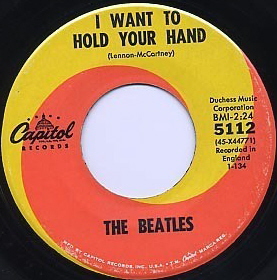 The first release of the song in the US was on the Capitol single released on December 26th, 1963. It only took three weeks on the Billboard Hot 100 to reach the #1 spot; #45 on January 18th, #2 on January 25th, and #1 on February 1st, 1964. The song stayed at #1 for seven straight weeks until it was displaced by Swan Records' re-released version of "She Loves You." It was in its second week at #1 when they made their first legendary appearance on the Ed Sullivan Show. At this point, the remainder of the agreed upon $40,000 that Capitol hadn’t as yet spent on promoting The Beatles was halted because, as Capitol President Alan Livingston stated, “I never got through the $40,000. The record exploded and the rest is history." The "I Want To Hold Your Hand" single sold over five million copies in the US alone, becoming the #1 song of 1964 in America according to Billboard magazine. It was nominated for "Record Of The Year" at the 1964 Grammy Awards, but lost out to "The Girl From Ipanema" by Stan Getz and Astrud Gilberto, which only peaked at #5 on the Billboard Hot 100 that year. The first release of the song in the US was on the Capitol single released on December 26th, 1963. It only took three weeks on the Billboard Hot 100 to reach the #1 spot; #45 on January 18th, #2 on January 25th, and #1 on February 1st, 1964. The song stayed at #1 for seven straight weeks until it was displaced by Swan Records' re-released version of "She Loves You." It was in its second week at #1 when they made their first legendary appearance on the Ed Sullivan Show. At this point, the remainder of the agreed upon $40,000 that Capitol hadn’t as yet spent on promoting The Beatles was halted because, as Capitol President Alan Livingston stated, “I never got through the $40,000. The record exploded and the rest is history." The "I Want To Hold Your Hand" single sold over five million copies in the US alone, becoming the #1 song of 1964 in America according to Billboard magazine. It was nominated for "Record Of The Year" at the 1964 Grammy Awards, but lost out to "The Girl From Ipanema" by Stan Getz and Astrud Gilberto, which only peaked at #5 on the Billboard Hot 100 that year.
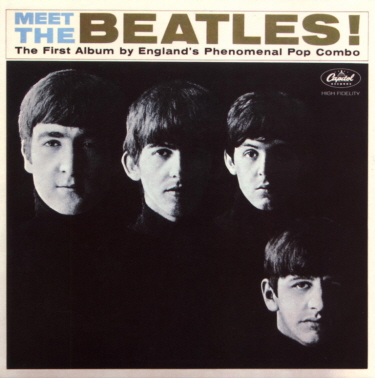 The next release of the song was on January 20th, 1964 on the Capitol album “Meet The Beatles!,” which remained at #1 on the Billboard album chart for 11 weeks and stayed on the chart for a remarkable 69 weeks. This album was finally released on an individual compact disc on January 21st, 2014, both the mono and stereo mixes being contained on a single CD. A mono edition of the album on opaque blue vinyl was then released on November 22nd, 2024 for sale exclusively at Target stores. In conjunction with the original 1964 release of this album, the song made its third appearance in February of 1964 with the distribution of “The Beatles Open-End Interview” EP that was sent to disc jockeys throughout the country. Side one of the disc featured recorded statements from the group to be used with an included script for simulating a personal interview with The Beatles. After the interview segment, the disc goes right into their first Capitol single “I Want To Hold Your Hand.” This extremely hard to find EP is quite the collectors’ item today. The next release of the song was on January 20th, 1964 on the Capitol album “Meet The Beatles!,” which remained at #1 on the Billboard album chart for 11 weeks and stayed on the chart for a remarkable 69 weeks. This album was finally released on an individual compact disc on January 21st, 2014, both the mono and stereo mixes being contained on a single CD. A mono edition of the album on opaque blue vinyl was then released on November 22nd, 2024 for sale exclusively at Target stores. In conjunction with the original 1964 release of this album, the song made its third appearance in February of 1964 with the distribution of “The Beatles Open-End Interview” EP that was sent to disc jockeys throughout the country. Side one of the disc featured recorded statements from the group to be used with an included script for simulating a personal interview with The Beatles. After the interview segment, the disc goes right into their first Capitol single “I Want To Hold Your Hand.” This extremely hard to find EP is quite the collectors’ item today.
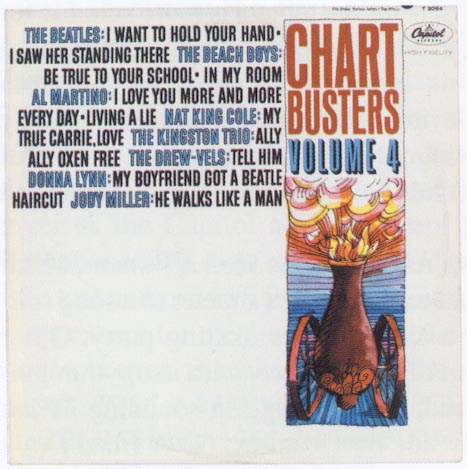 The next release of the song was on May 4th, 1964 on a Capitol compilation album entitled “Chart Busters Volume 4.” Both sides of their first single were featured on this album which, while only moderate sellers, was one in a series of sampler albums put out by Capitol to preview their latest releases. The next release of the song was on May 4th, 1964 on a Capitol compilation album entitled “Chart Busters Volume 4.” Both sides of their first single were featured on this album which, while only moderate sellers, was one in a series of sampler albums put out by Capitol to preview their latest releases.
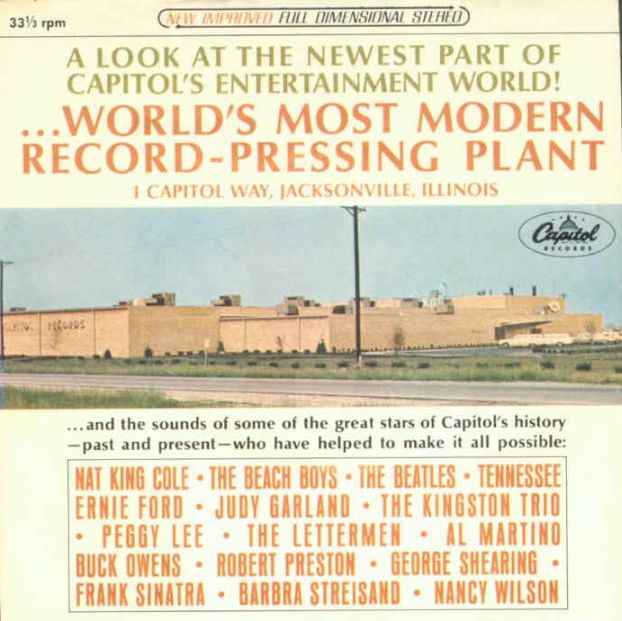 The next two appearances of the song on record were just partial sections of the song and are mentioned here as noteworthy side-points. The first was on the Capitol documentary double album “The Beatles’ Story,” which was released on November 23rd, 1964, and reached to #7 on the Billboard album chart. It appeared during the selection “Beatlemania In Action” on side one of the first album. Surprisingly, "The Beatles' Story" was also released on compact disc on January 21st., 2014, but only as contained in the 13 album box set "The US Albums." The second noteworthy partial release was a July 1964 souvenir 7" album to celebrate the opening of Capitol's pressing plant in Jacksonville, Illinois. The compact 33 disc, entitled “The Capitol Souvenir Record,” included an excerpt of many noteworthy hit songs on the Capitol label including “I Want To Hold Your Hand.” The next two appearances of the song on record were just partial sections of the song and are mentioned here as noteworthy side-points. The first was on the Capitol documentary double album “The Beatles’ Story,” which was released on November 23rd, 1964, and reached to #7 on the Billboard album chart. It appeared during the selection “Beatlemania In Action” on side one of the first album. Surprisingly, "The Beatles' Story" was also released on compact disc on January 21st., 2014, but only as contained in the 13 album box set "The US Albums." The second noteworthy partial release was a July 1964 souvenir 7" album to celebrate the opening of Capitol's pressing plant in Jacksonville, Illinois. The compact 33 disc, entitled “The Capitol Souvenir Record,” included an excerpt of many noteworthy hit songs on the Capitol label including “I Want To Hold Your Hand.”
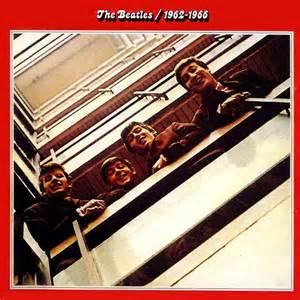 The next official release of the song was on April 2nd, 1973 with the first legitimate “greatest hits” package entitled “The Beatles/1962-1966,” better known as the “Red Album.” This double album peaked at #3 on the Billboard album chart and still featured the ‘fake’ stereo version of the song that appeared on the “Meet The Beatles!” album, although a stereo version had existed for nearly ten years by that time. This album's first compact disc release, which contained the true stereo mix, was on September 20th, 1993, a remastered version coming out on August 10th, 2010. The next official release of the song was on April 2nd, 1973 with the first legitimate “greatest hits” package entitled “The Beatles/1962-1966,” better known as the “Red Album.” This double album peaked at #3 on the Billboard album chart and still featured the ‘fake’ stereo version of the song that appeared on the “Meet The Beatles!” album, although a stereo version had existed for nearly ten years by that time. This album's first compact disc release, which contained the true stereo mix, was on September 20th, 1993, a remastered version coming out on August 10th, 2010.
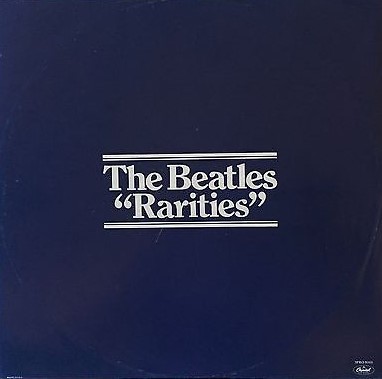 Because of EMI's decision to release a box set that included all of the British Beatles albums as well as an additional album entitled "Rarities" that included songs that did not appear on any British Beatles album, Capitol had initially decided to release this album in America. 2,000 promotional copies of this album were manufactured (#SPRO-8969) and then another unlimited number of advance copies (ESN-SN-12009) were printed in the fall of 1979. "I Want To Hold Your Hand" was included on this proposed album in replacement of "Komm Gib Mir Deine Hand" from the British "Rarities" album, but the entire project was decided to be abondoned due to the fact that this and most of the songs contained therein were available on other Beatles albums in the US at the time. These promotional albums are very collectible today. Because of EMI's decision to release a box set that included all of the British Beatles albums as well as an additional album entitled "Rarities" that included songs that did not appear on any British Beatles album, Capitol had initially decided to release this album in America. 2,000 promotional copies of this album were manufactured (#SPRO-8969) and then another unlimited number of advance copies (ESN-SN-12009) were printed in the fall of 1979. "I Want To Hold Your Hand" was included on this proposed album in replacement of "Komm Gib Mir Deine Hand" from the British "Rarities" album, but the entire project was decided to be abondoned due to the fact that this and most of the songs contained therein were available on other Beatles albums in the US at the time. These promotional albums are very collectible today.
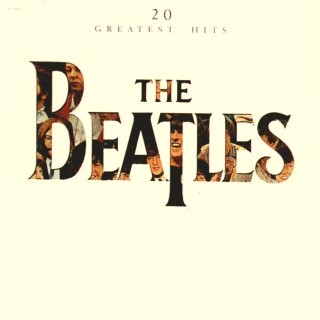 The next appearance of the song was on October 15th, 1982, with the Capitol album “20 Greatest Hits.” The album only peaked at #50 on the Billboard album chart, but furnished a single disc “greatest hits” package for record collectors to own instead of having to invest in two double albums in order to have all of the essential Beatles hits. This idea developed into the single CD “Beatles 1” released in 2000, which superseded this album and rendered it pointless to reissue. The next appearance of the song was on October 15th, 1982, with the Capitol album “20 Greatest Hits.” The album only peaked at #50 on the Billboard album chart, but furnished a single disc “greatest hits” package for record collectors to own instead of having to invest in two double albums in order to have all of the essential Beatles hits. This idea developed into the single CD “Beatles 1” released in 2000, which superseded this album and rendered it pointless to reissue.
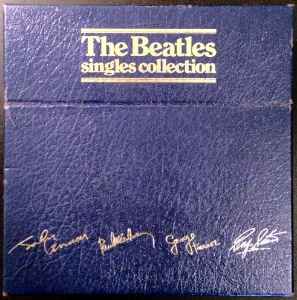 The first time "I Want To Hold Your Hand" was paired with "This Boy" on a single in the US as it was in Britain was on December 6th, 1982 as featured in the vinyl box set "The Beatles Singles Collection." When this package was released as "The Beatles CD Singles Collection" on November 11th, 1992 and as a reissued vinyl collection titled "The Singles Collection" on November 22nd, 2019, this same single was included. The first time "I Want To Hold Your Hand" was paired with "This Boy" on a single in the US as it was in Britain was on December 6th, 1982 as featured in the vinyl box set "The Beatles Singles Collection." When this package was released as "The Beatles CD Singles Collection" on November 11th, 1992 and as a reissued vinyl collection titled "The Singles Collection" on November 22nd, 2019, this same single was included.
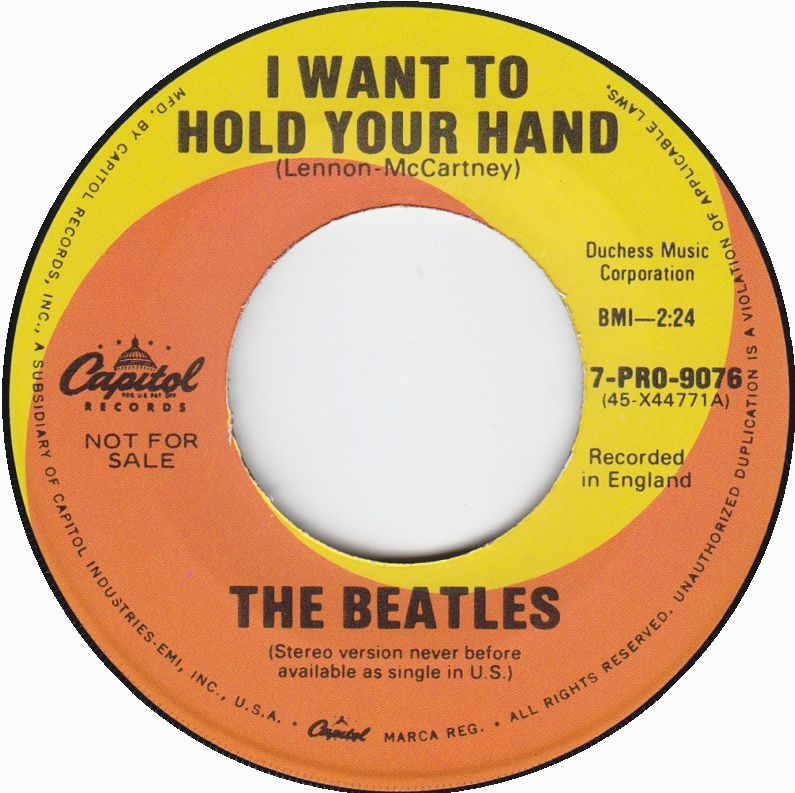 Just over twenty years after it was released as a single in America, Capitol Records released an anniversary edition of the original "I Want To Hold Your Hand" single on February 10th, 1984. Interestingly, the picture sleeve used for this release airbrushed out the cigarette from Paul's right hand, making this photo more "politically corect." Promotional copies of this single contain the mono mix on one side (as included on the commercial release) and the stereo mix on the other side with a special catalog number "7-PRO-9076." This marks the first time that the stereo mix made by George Martin on November 7th, 1966 appeared in America, this label reading "Stereo version never before available as single in US." Just over twenty years after it was released as a single in America, Capitol Records released an anniversary edition of the original "I Want To Hold Your Hand" single on February 10th, 1984. Interestingly, the picture sleeve used for this release airbrushed out the cigarette from Paul's right hand, making this photo more "politically corect." Promotional copies of this single contain the mono mix on one side (as included on the commercial release) and the stereo mix on the other side with a special catalog number "7-PRO-9076." This marks the first time that the stereo mix made by George Martin on November 7th, 1966 appeared in America, this label reading "Stereo version never before available as single in US."
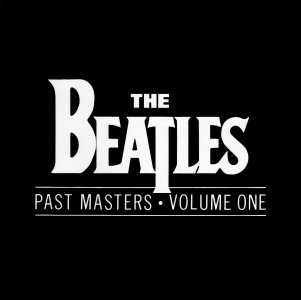 Then came the CD “Past Masters, Volume One,” which was released on March 7th, 1988. The purpose of the album, along with “Past Masters, Volume Two,” was to make all of the released Beatles songs available on CD for the first time. With this disc, all of America now had access to “I Want To Hold Your Hand” in true stereo. Both volumes of "Past Masters" were combined and released on vinyl on October 24th, 1988 under the simple title "Past Masters," this set being remastered and re-released on September 9th, 2009 on CD and on November 12th, 2012 on vinyl. Then came the CD “Past Masters, Volume One,” which was released on March 7th, 1988. The purpose of the album, along with “Past Masters, Volume Two,” was to make all of the released Beatles songs available on CD for the first time. With this disc, all of America now had access to “I Want To Hold Your Hand” in true stereo. Both volumes of "Past Masters" were combined and released on vinyl on October 24th, 1988 under the simple title "Past Masters," this set being remastered and re-released on September 9th, 2009 on CD and on November 12th, 2012 on vinyl.
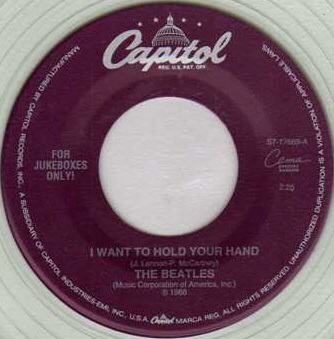 On June 30th, 1992, "I Want To Hold Your Hand" was included on the box set “Compact Disc EP Collection.” Its appearance was due to it being on the original British EP “The Beatles’ Million Sellers,” which was released on December 6th, 1965. On June 30th, 1992, "I Want To Hold Your Hand" was included on the box set “Compact Disc EP Collection.” Its appearance was due to it being on the original British EP “The Beatles’ Million Sellers,” which was released on December 6th, 1965.
In March of 1994, Capitol released the single once again in their Cema "For Jukebox Only" series on clear vinyl, this once again being a pairing of "I Want To Hold Your Hand" with "This Boy" as originally released in Britain.
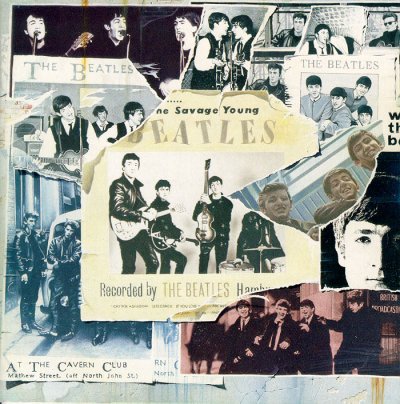 The next release was on the highly anticipated “Anthology 1” album, which featured a live performance of the song from December 2nd, 1963, on the British comedy/variety television show entitled “The Morecambe And Wise Show.” The album was released on November 21st, 1995 and debuted at #1 on the Billboard album chart, staying there for three weeks, while remaining in the charts for 29 weeks total. It sold over a million units in the first week of release and has reached the 4 million mark in the US. The next release was on the highly anticipated “Anthology 1” album, which featured a live performance of the song from December 2nd, 1963, on the British comedy/variety television show entitled “The Morecambe And Wise Show.” The album was released on November 21st, 1995 and debuted at #1 on the Billboard album chart, staying there for three weeks, while remaining in the charts for 29 weeks total. It sold over a million units in the first week of release and has reached the 4 million mark in the US.
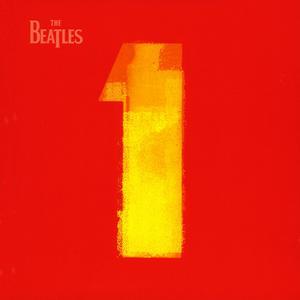 Then came the aforementioned “Beatles 1” album, which was released on November 14, 2000. The album debuted at #1 on the Billboard album chart and, after going to #2 for two weeks, reclaimed the top spot and stayed there to acquire a total of 8 weeks at #1. The album spent an amazing 197 weeks in the Billboard album chart, and went on to sell over 11 million copies in the US, as well as over 31 million copies worldwide. A remastered version of this album was released in September of 2011 and a newly mixed version was released on November 6th, 2015. Then came the aforementioned “Beatles 1” album, which was released on November 14, 2000. The album debuted at #1 on the Billboard album chart and, after going to #2 for two weeks, reclaimed the top spot and stayed there to acquire a total of 8 weeks at #1. The album spent an amazing 197 weeks in the Billboard album chart, and went on to sell over 11 million copies in the US, as well as over 31 million copies worldwide. A remastered version of this album was released in September of 2011 and a newly mixed version was released on November 6th, 2015.
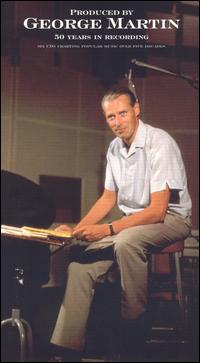 On July 17th, 2001, a compilation box set was released under the title "Produced By George Martin," which contained an extensive collection of examples of George Martin's production work throughout his career. His historic production of The Beatles' "I Want To Hold Your Hand" was included on "Disc Three (That Was The Decade That Was)" as well as the single CD version of this collection which was released on November 6th, 2006. On July 17th, 2001, a compilation box set was released under the title "Produced By George Martin," which contained an extensive collection of examples of George Martin's production work throughout his career. His historic production of The Beatles' "I Want To Hold Your Hand" was included on "Disc Three (That Was The Decade That Was)" as well as the single CD version of this collection which was released on November 6th, 2006.
On November 15th, 2004, the box set “The Capitol Albums, Vol. 1” was released, which featured both the mono and the “duophonic” stereo mix as heard on the original “Meet The Beatles!” album.
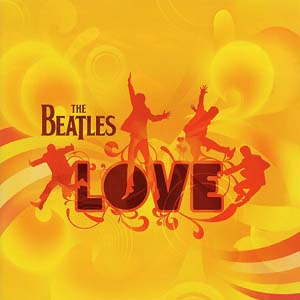 Not to be forgotten is the album “Love,” which came out on November 21st, 2006. This was a soundtrack compilation album featuring Beatles music remixed for the famous Beatles Cirque du Soleil show. George Martin and son Giles Martin created this as a musical landscape and foundation for the acrobatic show. The abbreviated version of “I Want To Hold Your Hand” that appears in the show and on the album features elements of both the studio recording and their live performance at the Hollywood Bowl, which comprised the crowd sounds heard in the background of the song. The album peaked at #4 on the Billboard album chart and has sold well over 2 million copies to date. Not to be forgotten is the album “Love,” which came out on November 21st, 2006. This was a soundtrack compilation album featuring Beatles music remixed for the famous Beatles Cirque du Soleil show. George Martin and son Giles Martin created this as a musical landscape and foundation for the acrobatic show. The abbreviated version of “I Want To Hold Your Hand” that appears in the show and on the album features elements of both the studio recording and their live performance at the Hollywood Bowl, which comprised the crowd sounds heard in the background of the song. The album peaked at #4 on the Billboard album chart and has sold well over 2 million copies to date.
September 9th, 2009 was the release date for the new compact disc box set “The Beatles In Mono” which features a fantastic remastered mono version of the song as contained on the disc "Mono Masters." The vinyl edition of this box set was first released on September 9th, 2014.
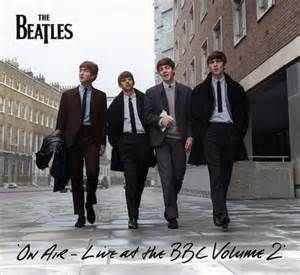 On November 11th, 2013, the album "On Air - Live At The BBC Volume 2" was released, which features yet another version of "I Want To Hold Your Hand," this recorded on December 18th, 1963 for the radio program "The Beatles Say From Us To You." They even went as far as performing the handclap overdub on this version as they did on the original, erupting in applause as the song concludes. Also released around this date was a fourteen-track sampler of the above album for promotional purposes, "I Want To Hold Your Hand" being included therein. On November 11th, 2013, the album "On Air - Live At The BBC Volume 2" was released, which features yet another version of "I Want To Hold Your Hand," this recorded on December 18th, 1963 for the radio program "The Beatles Say From Us To You." They even went as far as performing the handclap overdub on this version as they did on the original, erupting in applause as the song concludes. Also released around this date was a fourteen-track sampler of the above album for promotional purposes, "I Want To Hold Your Hand" being included therein.
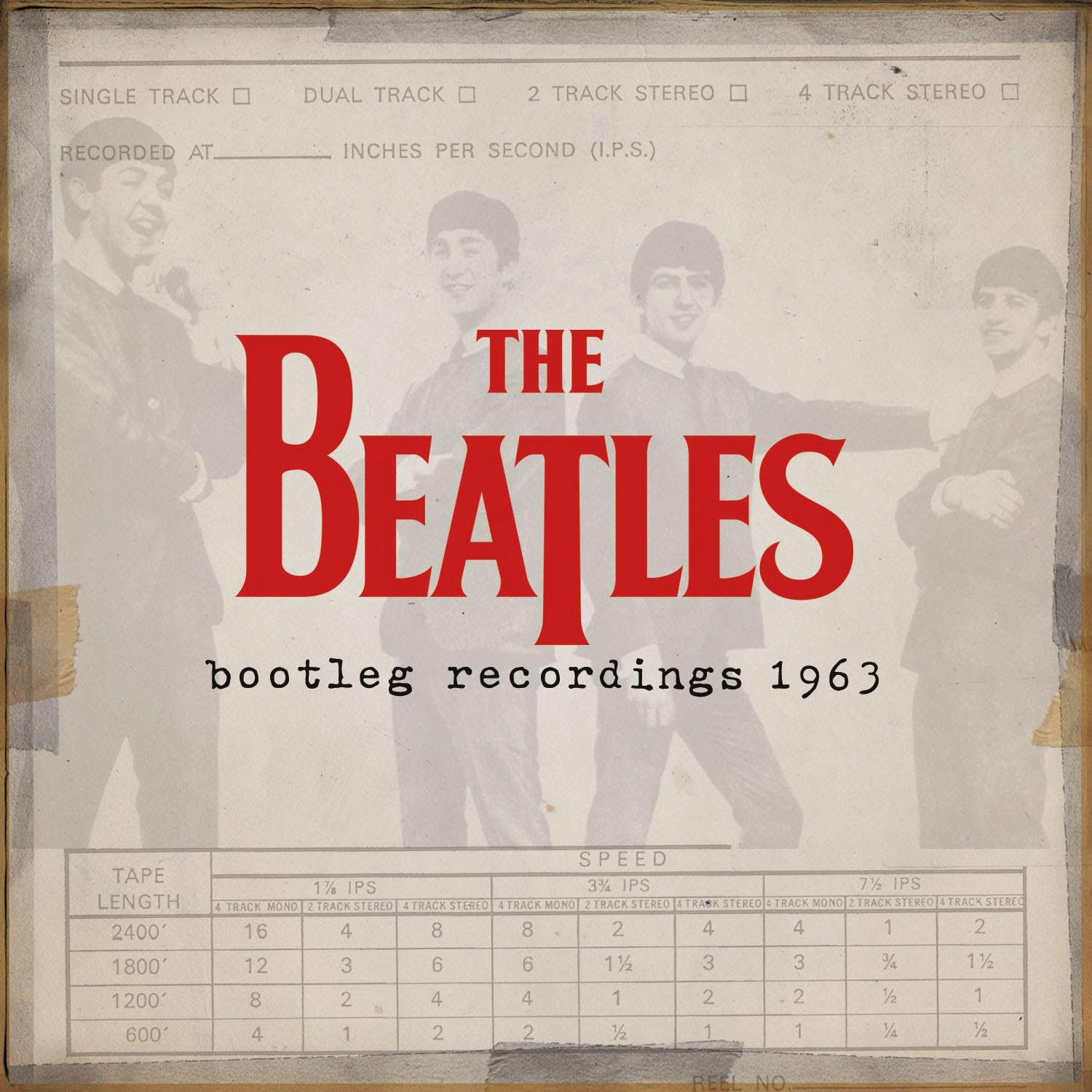 On December 17th, 2013, iTunes released a 59 track compilation album entitled "Bootleg Recordings 1963" only available on their downloading platform. Their BBC perforamce of "I Want To Hold Your Hand" on December 21st, 1963 for the program "Saturday Club" was included on this album. The purpose of this release was to extend the copyright of these recordings under European Union law from 50 years (which would have expired at the end of 2013) to 70 years (until 2033), this being considered an official release. This compilation album was only available in the US on that date to those in the know for a number of hours for $39.99 in its entirety or to be purchased as individual tracks, but was later made available for purchase as well. On December 17th, 2013, iTunes released a 59 track compilation album entitled "Bootleg Recordings 1963" only available on their downloading platform. Their BBC perforamce of "I Want To Hold Your Hand" on December 21st, 1963 for the program "Saturday Club" was included on this album. The purpose of this release was to extend the copyright of these recordings under European Union law from 50 years (which would have expired at the end of 2013) to 70 years (until 2033), this being considered an official release. This compilation album was only available in the US on that date to those in the know for a number of hours for $39.99 in its entirety or to be purchased as individual tracks, but was later made available for purchase as well.
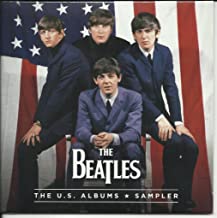 In promotion of the 2014 box set "The US Albums," a 25-song sampler CD was manufactured for limited release on January 21st, 2014, this containing the stereo mix of "I Want To Hold Your Hand." In promotion of the 2014 box set "The US Albums," a 25-song sampler CD was manufactured for limited release on January 21st, 2014, this containing the stereo mix of "I Want To Hold Your Hand."
On September 9th, 2016, The Beatles' August 23rd, 1964 performance of "I Want To Hold Your Hand" was included as a bonus track on the long-awaited remastered release of "Live At The Hollywood Bowl."
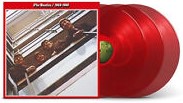 A 50th Anniversay edition of the compilation album "The Beatles / 1962 - 1966" (aka "The Red Album") was released on November 10th, 2023, the new stereo mix of "I Want To Hold Your Hand," as detailed above, being included. This expanded release included 12 additional songs for a total of 38 tracks, and was made available as a double CD and as a triple vinyl release on both black and red vinyl. A 50th Anniversay edition of the compilation album "The Beatles / 1962 - 1966" (aka "The Red Album") was released on November 10th, 2023, the new stereo mix of "I Want To Hold Your Hand," as detailed above, being included. This expanded release included 12 additional songs for a total of 38 tracks, and was made available as a double CD and as a triple vinyl release on both black and red vinyl.
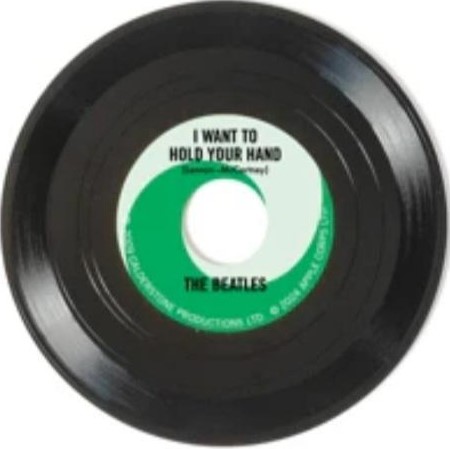 On April 20th, 2024, Apple released "I Want To Hold Your Hand" as one of four 3" singles on Record Store Day as a special "RSD Exclusive Release." Only 1500 copies each were made of these limited edition releases which can only be played on 3" turntables, Crosley Manufacturing also releasing a limited edition package on this day including a special Beatles Mini Turntable, record carrying case and all four Beatles singles. These releases were made in celebration of the 60th Anniversary of The Beatles' first appearance on the Ed Sullivan Show on February 9th, 1964. On April 20th, 2024, Apple released "I Want To Hold Your Hand" as one of four 3" singles on Record Store Day as a special "RSD Exclusive Release." Only 1500 copies each were made of these limited edition releases which can only be played on 3" turntables, Crosley Manufacturing also releasing a limited edition package on this day including a special Beatles Mini Turntable, record carrying case and all four Beatles singles. These releases were made in celebration of the 60th Anniversary of The Beatles' first appearance on the Ed Sullivan Show on February 9th, 1964.
Live Performances
There is no evidence to suggest that The Beatles performed the song live between the time of its writing in September and its British release on November 29th, 1963, probably because they felt the song would be further refined in the studio, which it was. But only three days after its British release as a single, they premiered the song on the ever popular “Morcambe and Wise” TV show.
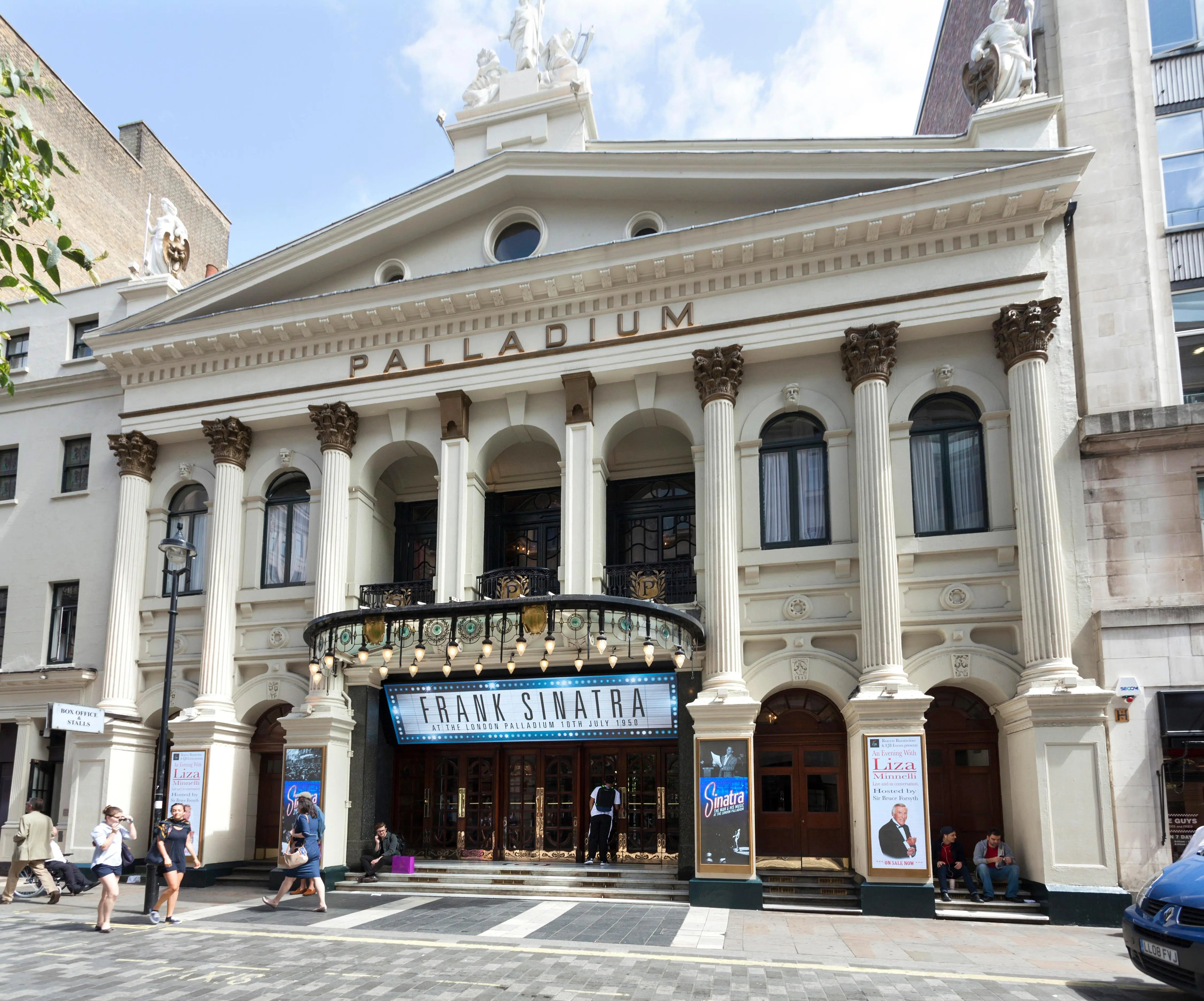 From that point on, through to the end of their first extensive world tour in November of 1964, the song became a staple of their brief live set. Most notable was its inclusion in their landmark appearance at the London Palladium on January 12th, as well as in their 19-day concert performances at the Olympia Theatre in Paris beginning on January 15th, 1964. From that point on, through to the end of their first extensive world tour in November of 1964, the song became a staple of their brief live set. Most notable was its inclusion in their landmark appearance at the London Palladium on January 12th, as well as in their 19-day concert performances at the Olympia Theatre in Paris beginning on January 15th, 1964.
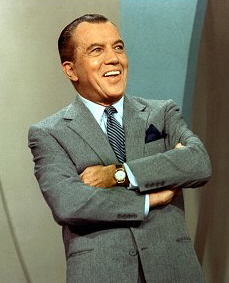 The next stop for the group was their debut in America, for which they performed “I Want To Hold Your Hand” for all three Ed Sullivan Show appearances, wanting to promote their current #1 hit. Their brief concert stint in America in February also contained the song, as can be seen in the footage for the February 11th Washington D.C. concert at the Washington Coliseum Sports Center. The next stop for the group was their debut in America, for which they performed “I Want To Hold Your Hand” for all three Ed Sullivan Show appearances, wanting to promote their current #1 hit. Their brief concert stint in America in February also contained the song, as can be seen in the footage for the February 11th Washington D.C. concert at the Washington Coliseum Sports Center.
British television got another of many glimpses of the song on the special “Around The Beatles,” broadcast on May 6th and June 8th, 1964. The song was performed as part of a medley that consisted of the first five British singles.
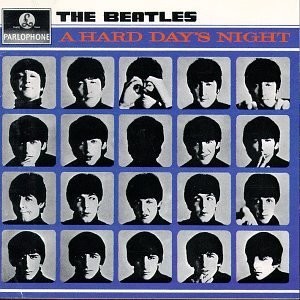 Their world tour, which commenced on June 4th in Copenhagen and also included the Netherlands, Australia, New Zealand, Britain and eventually the US, featured the song consistently in their set list. As the world tour ended in Bristol on November 10th, 1964, it appears that “I Want To Hold Your Hand” was then dropped from their set list for good. After all, by that time they had two more British #1 hits and a new album to promote, which was the soundtrack to their blockbuster movie “A Hard Day’s Night.” Their world tour, which commenced on June 4th in Copenhagen and also included the Netherlands, Australia, New Zealand, Britain and eventually the US, featured the song consistently in their set list. As the world tour ended in Bristol on November 10th, 1964, it appears that “I Want To Hold Your Hand” was then dropped from their set list for good. After all, by that time they had two more British #1 hits and a new album to promote, which was the soundtrack to their blockbuster movie “A Hard Day’s Night.”
 While Paul never thought to include "I Want To Hold Your Hand" in the set list of any of his solo tours, there was one occasion that he and his touring band played the song on stage. This was during a sound check on July 4th, 1990 at the RFK Stadium in Washington, DC. This was the final time that any member of The Beatles performed this groundbreaking song. While Paul never thought to include "I Want To Hold Your Hand" in the set list of any of his solo tours, there was one occasion that he and his touring band played the song on stage. This was during a sound check on July 4th, 1990 at the RFK Stadium in Washington, DC. This was the final time that any member of The Beatles performed this groundbreaking song.
Conclusion
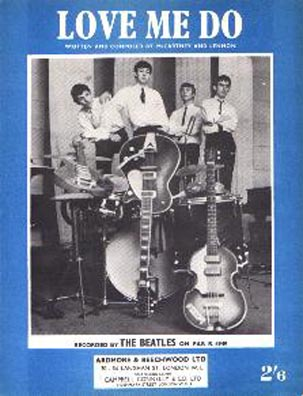 George Martin has described "I Want To Hold Your Hand" as "the apex of Phase One of The Beatles' development." He then explained, "When they started out, in the 'Love Me Do' days, they weren't good writers. They stole unashamedly from existing records. It wasn't until they tasted blood that they realized they could do this, and that set them on the road to writing better songs." George Martin has described "I Want To Hold Your Hand" as "the apex of Phase One of The Beatles' development." He then explained, "When they started out, in the 'Love Me Do' days, they weren't good writers. They stole unashamedly from existing records. It wasn't until they tasted blood that they realized they could do this, and that set them on the road to writing better songs."
From beginning to end, “I Want To Hold Your Hand” was truly one of the most exciting records The Beatles ever made. From the historic significance of its explosion onto the American charts to the cultural effect it has had on rock and roll to this day, the Lennon and McCartney songwriting team surely "hit the nail on the head" as to what would go over well in America. To say that the song "took the country by storm" would be quite an understatement, let alone selling 15 million copies worldwide.
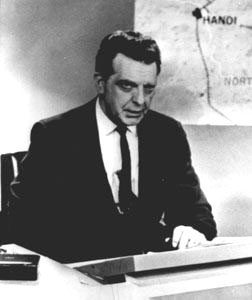 One can usually judge the effect of a cultural phenomenon by its detractors. The Beatles, and this song in particular, were viewed as a threat to all that was sacred and decent in the country. A sterling example of the older generation's distaste for this influence was New York radio station WNEW continually saying on air that “I Want To Hold Your Hand” made some people want to hold their noses. Chet Huntley, on the NBC Evening News, refused to show footage of The Beatles arriving at Kennedy Airport in February of 1964, actually saying on air that, because of “the subject of the film” footage taken that day, he felt that “there is absolutely no need to show any of” that footage. Since 1964, what other recording artist, or song, has ever provoked this much resistance? Time has definitely proven to be in the favor of The Beatles, as now the innocence of “I Want To Hold Your Hand” can only leave us wondering what all the subversive talk was about. One can usually judge the effect of a cultural phenomenon by its detractors. The Beatles, and this song in particular, were viewed as a threat to all that was sacred and decent in the country. A sterling example of the older generation's distaste for this influence was New York radio station WNEW continually saying on air that “I Want To Hold Your Hand” made some people want to hold their noses. Chet Huntley, on the NBC Evening News, refused to show footage of The Beatles arriving at Kennedy Airport in February of 1964, actually saying on air that, because of “the subject of the film” footage taken that day, he felt that “there is absolutely no need to show any of” that footage. Since 1964, what other recording artist, or song, has ever provoked this much resistance? Time has definitely proven to be in the favor of The Beatles, as now the innocence of “I Want To Hold Your Hand” can only leave us wondering what all the subversive talk was about.
Song Summary
“I Want To Hold Your Hand”
Written by: John Lennon / Paul McCartney
- Song Written: September 1963
- Song Recorded: October 17th, 1963
- First US Release Date: December 26, 1963
- US Single Release: Capitol #5112
- Highest Chart Position: #1 (7 weeks)
- First US Album Release: Capitol #ST 2047 “Meet The Beatles!”
- British Album Release: Parlophone #PCS 7016 “A Collection Of Beatles Oldies”
- Length: 2:24
- Key: G major
- Producer: George Martin
- Engineers: Norman Smith, Geoff Emerick
Instrumentation (most likely):
- John Lennon – Lead Vocals, Rhythm Guitar (1958 Rickenbacher 325), Handclaps
- Paul McCartney - Lead and Harmony Vocals, Bass Guitar (1963 Hofner 500/1), Handclaps
- George Harrison – Lead Guitar (1962 Gretsch 6122 Country Gentleman), Handclaps
- Ringo Starr – Drums (1963 Ludwig Downbeat Black Oyster Pearl), Handclaps
Written and compiled by Dave Rybaczewski
|
IF YOU WOULD LIKE TO MAKE A DONATION TO KEEP THIS WEBSITE UP AND RUNNING, PLEASE CLICK BELOW!
Sign Up Below for our MONTHLY BEATLES TRIVIA QUIZ!
|